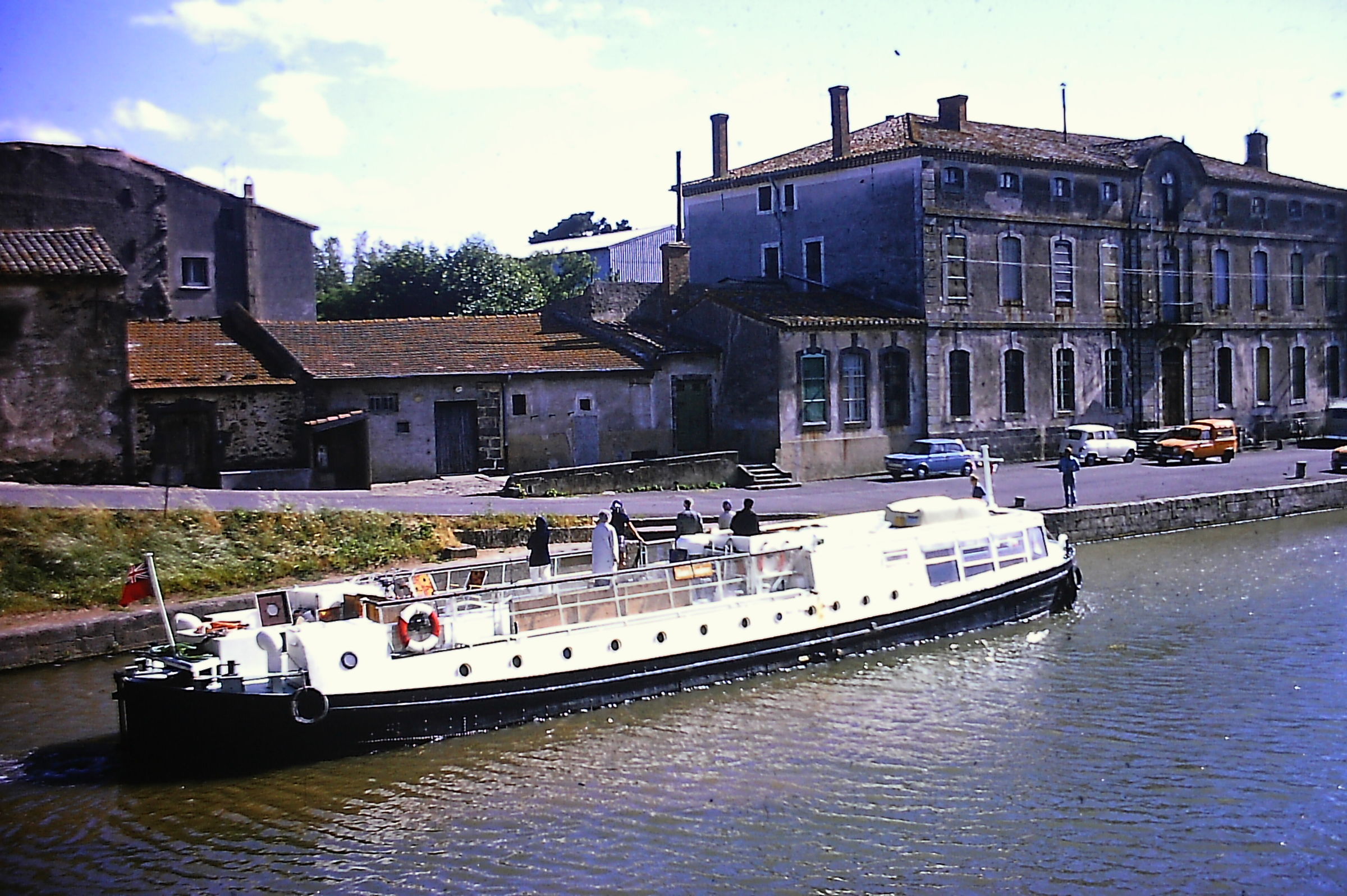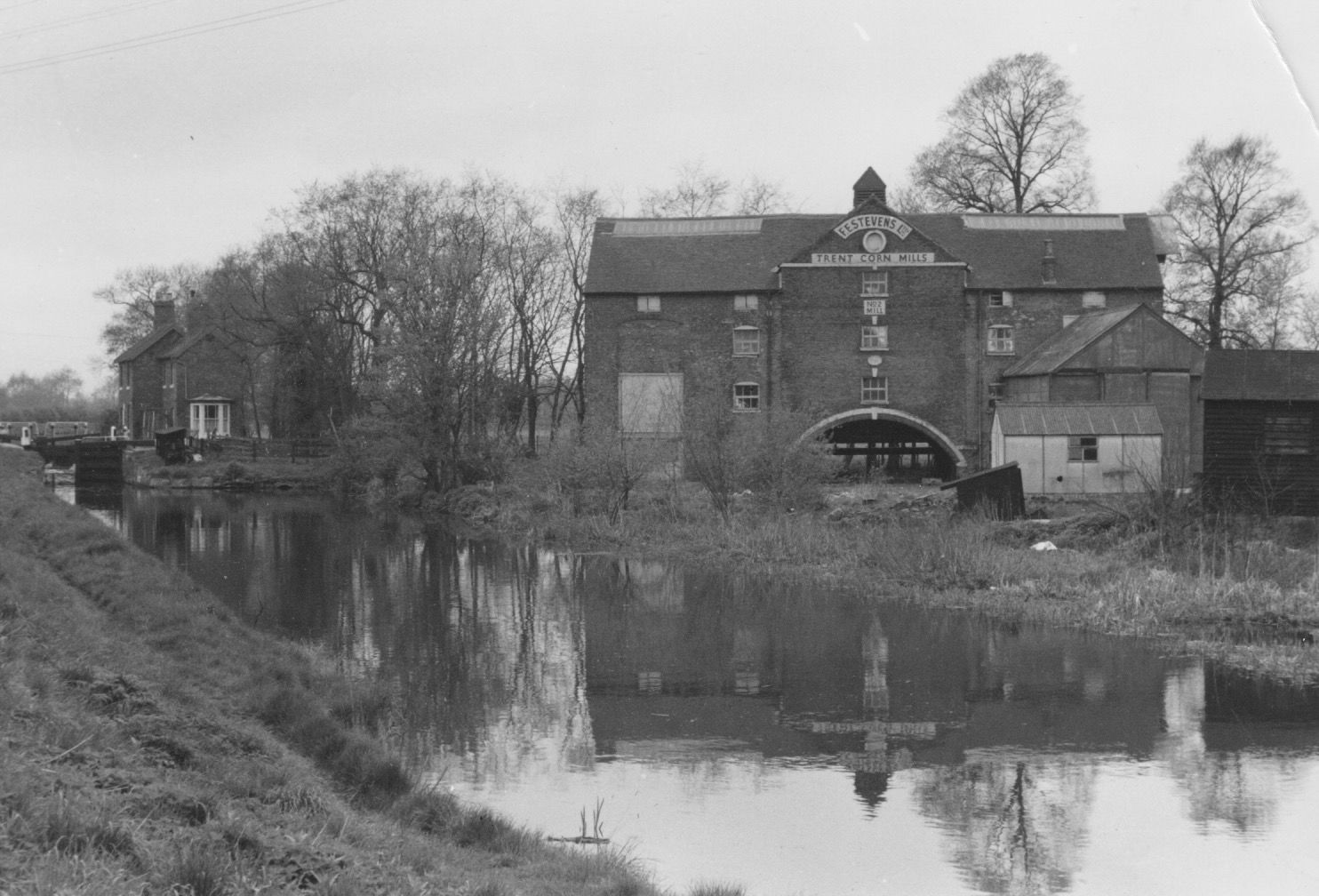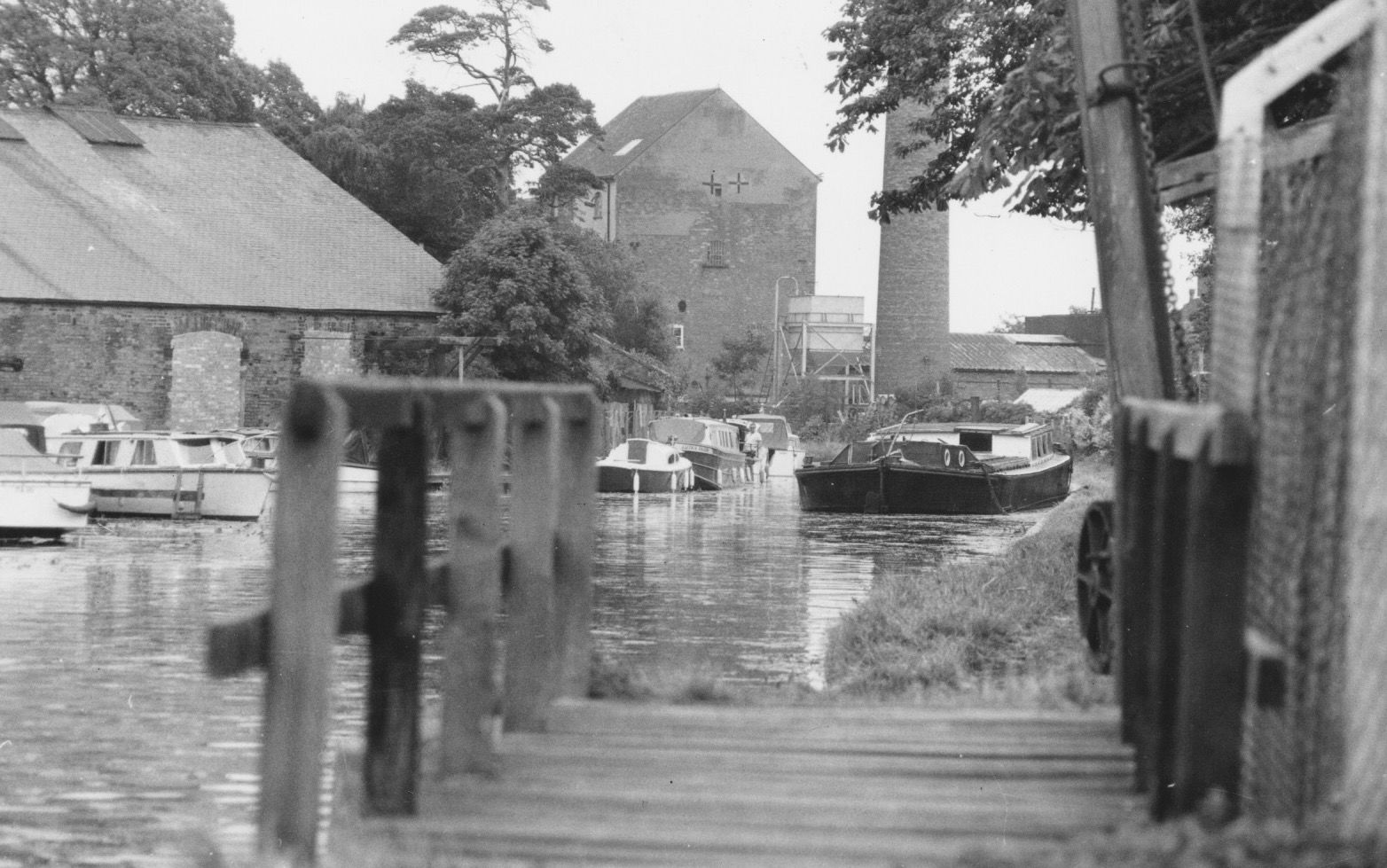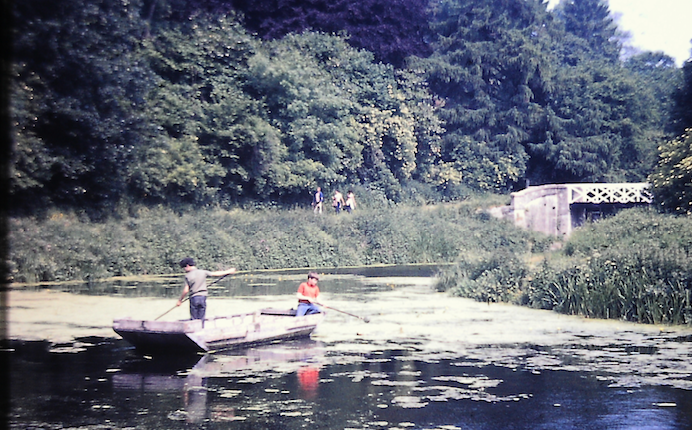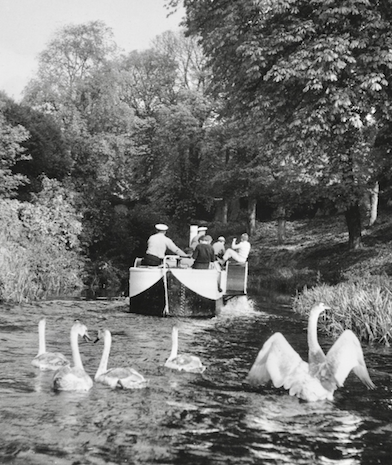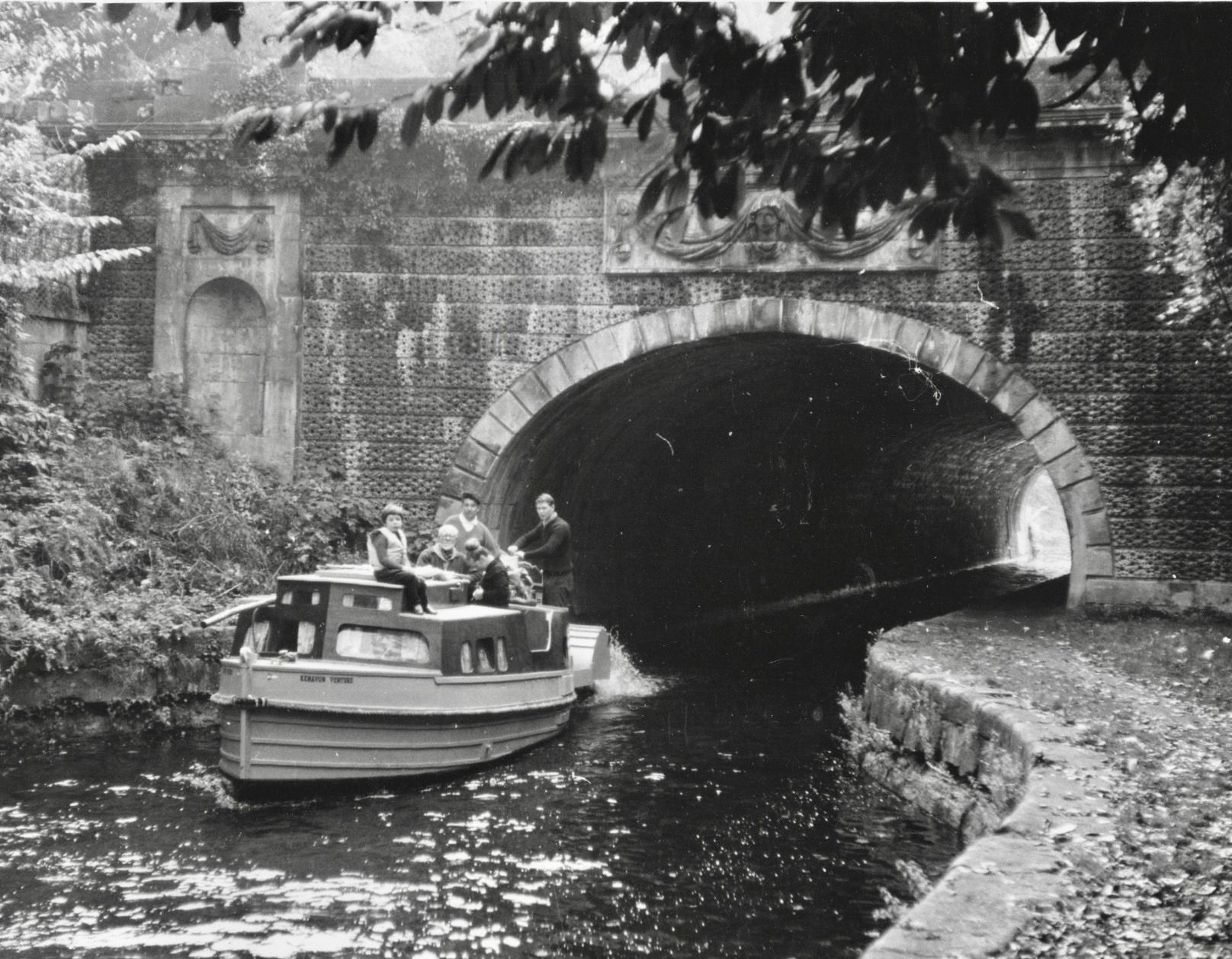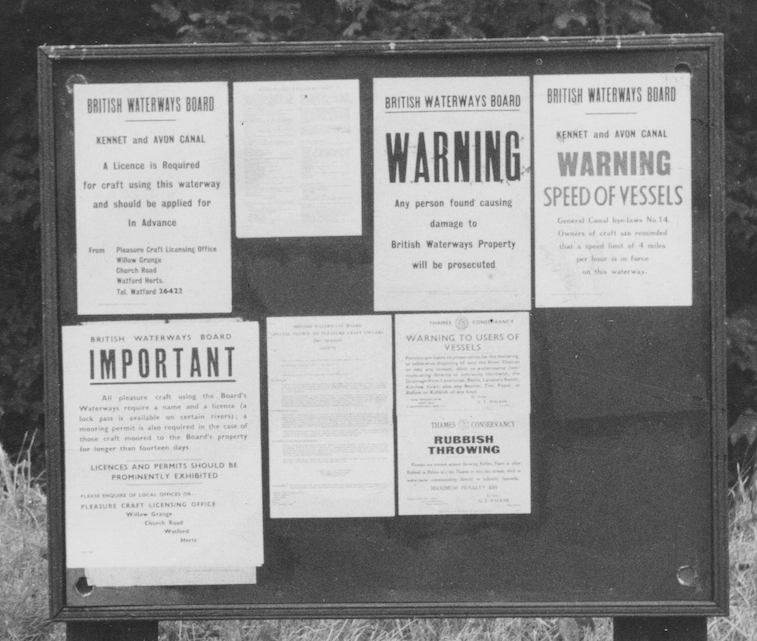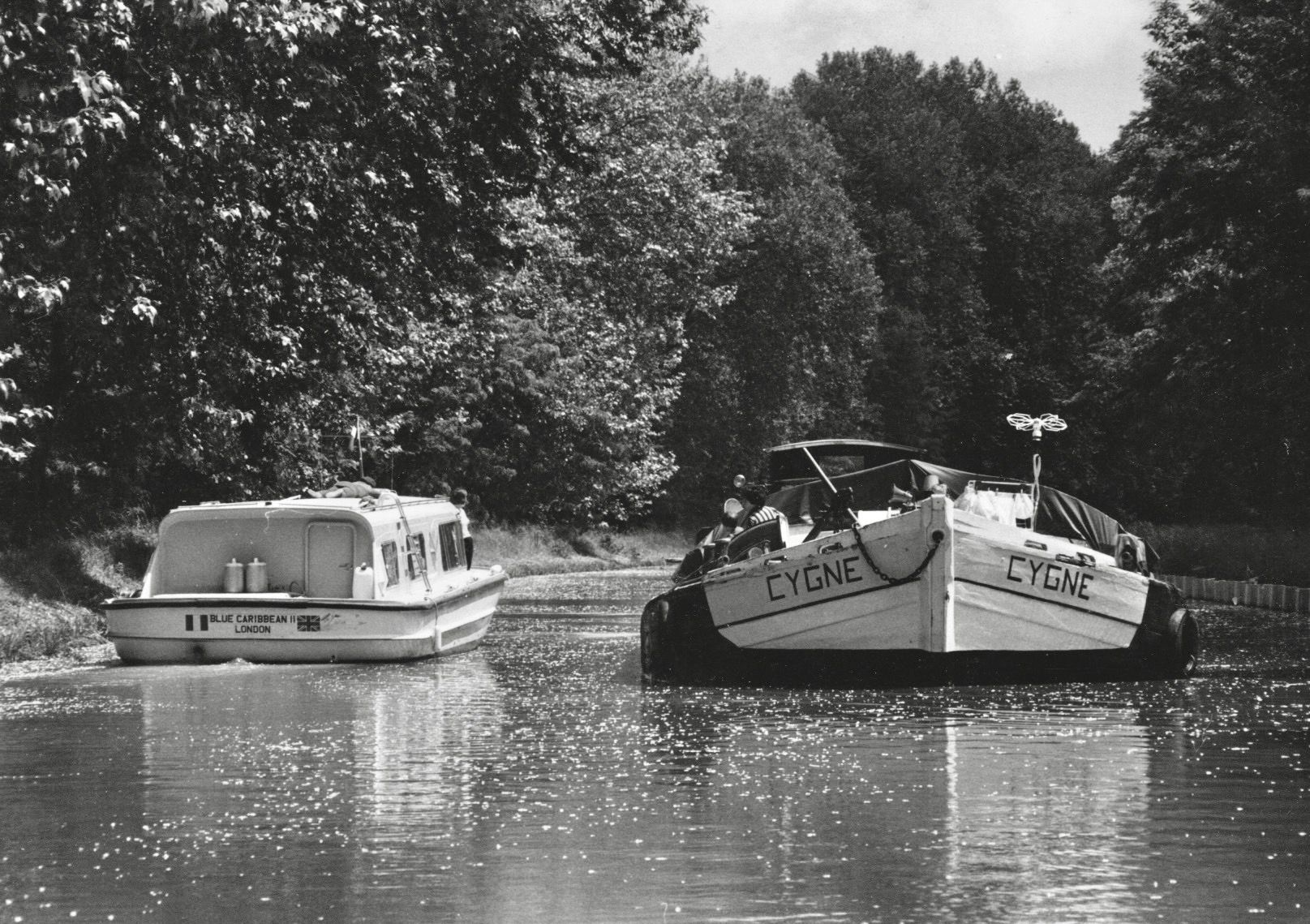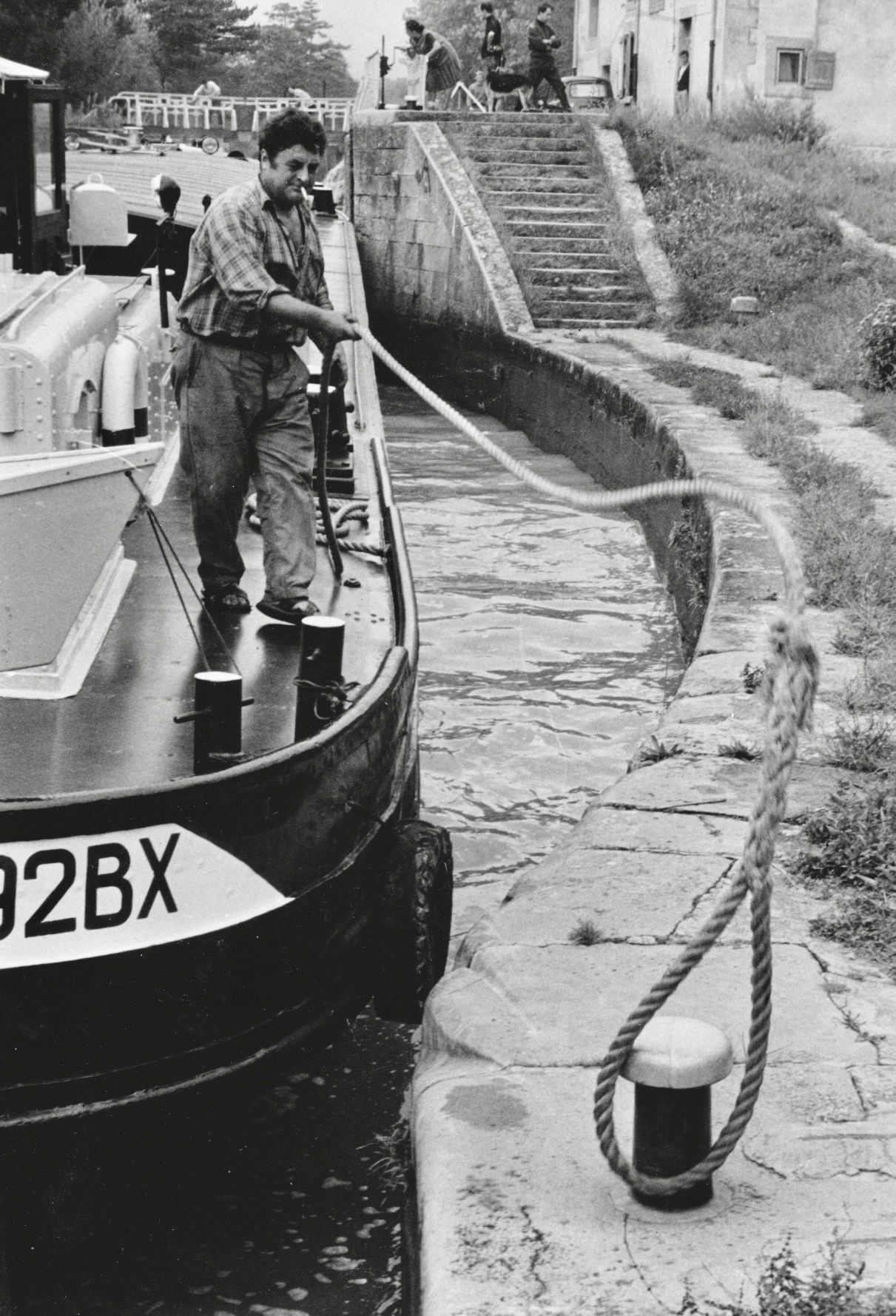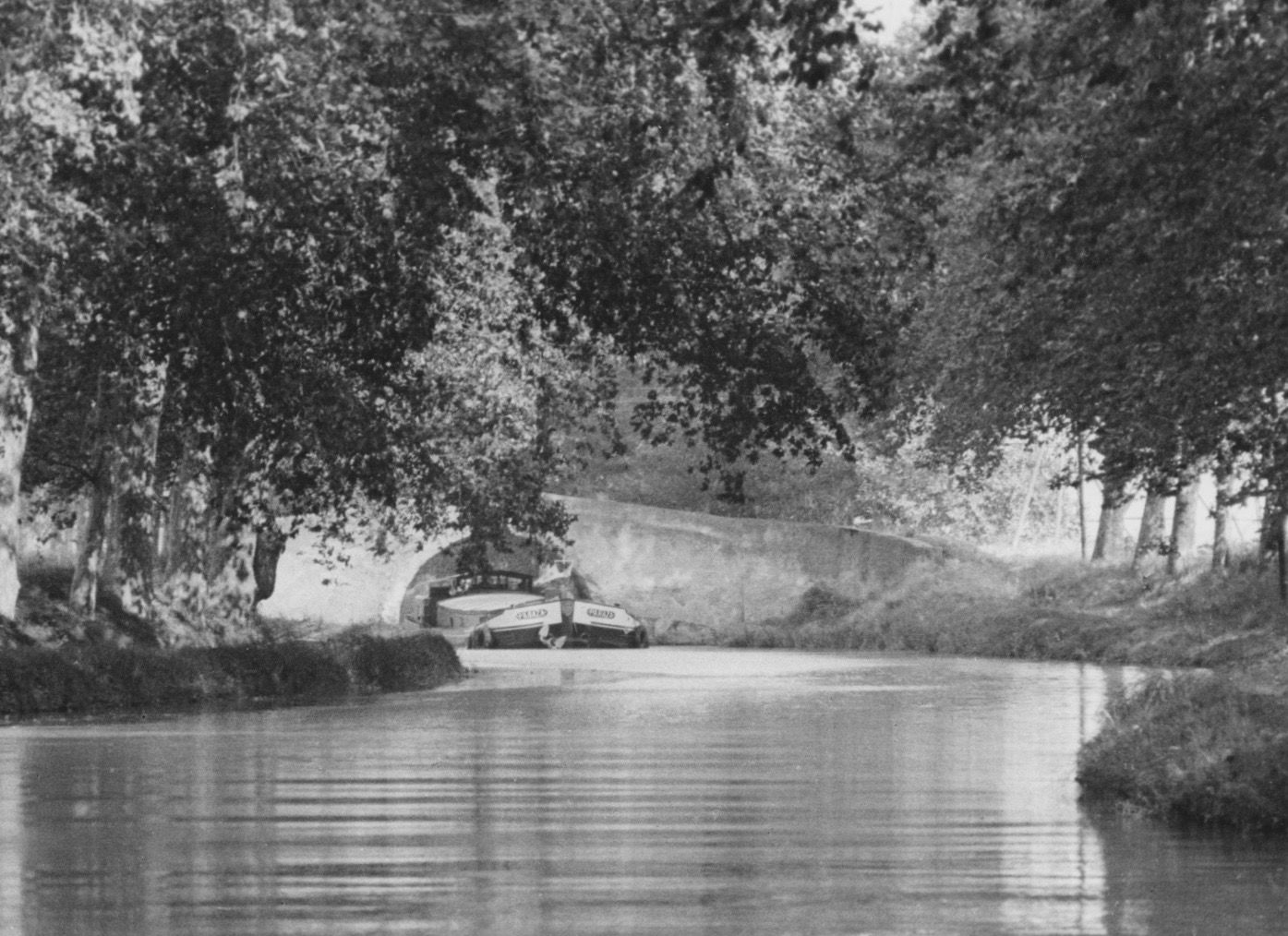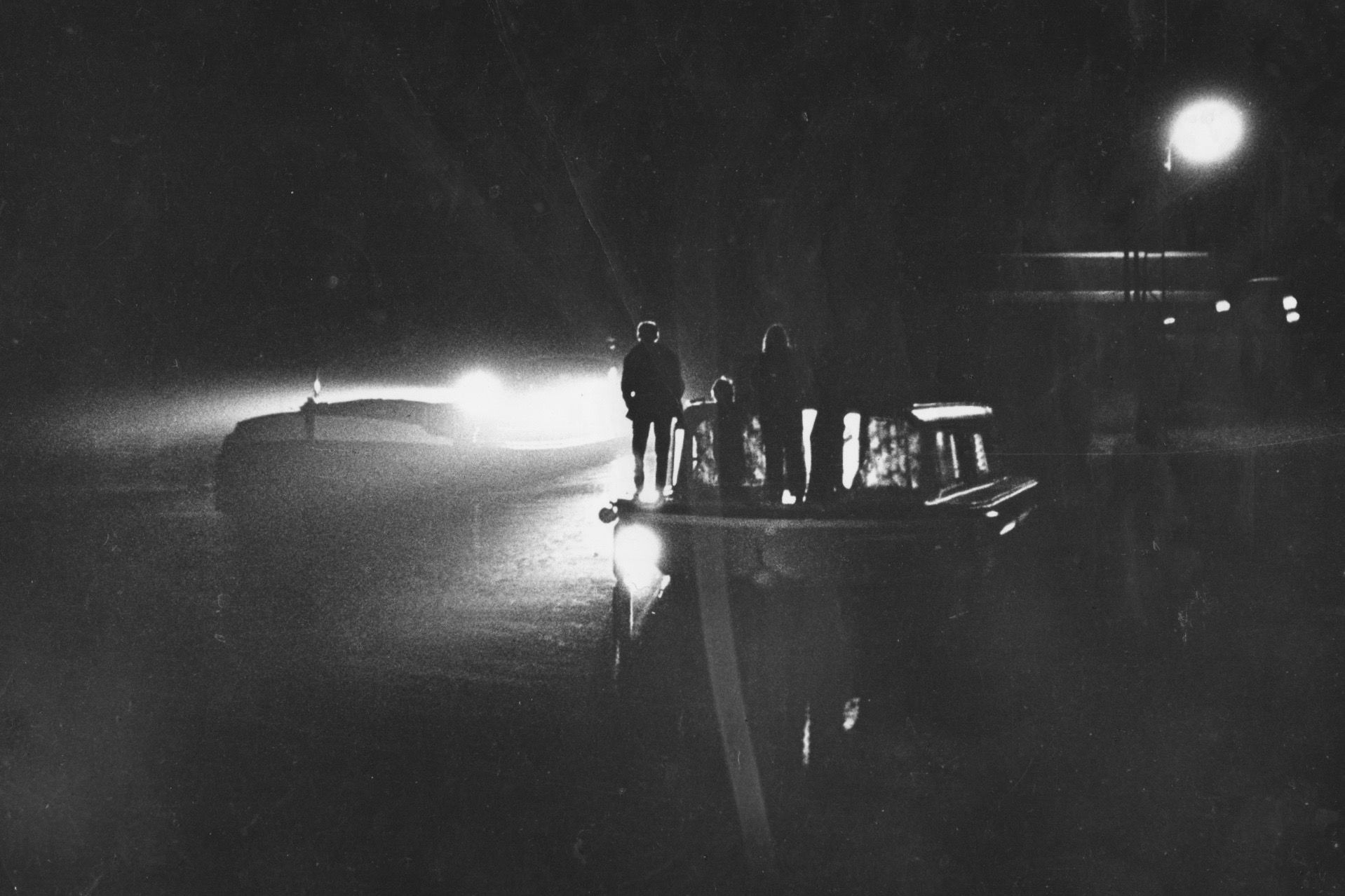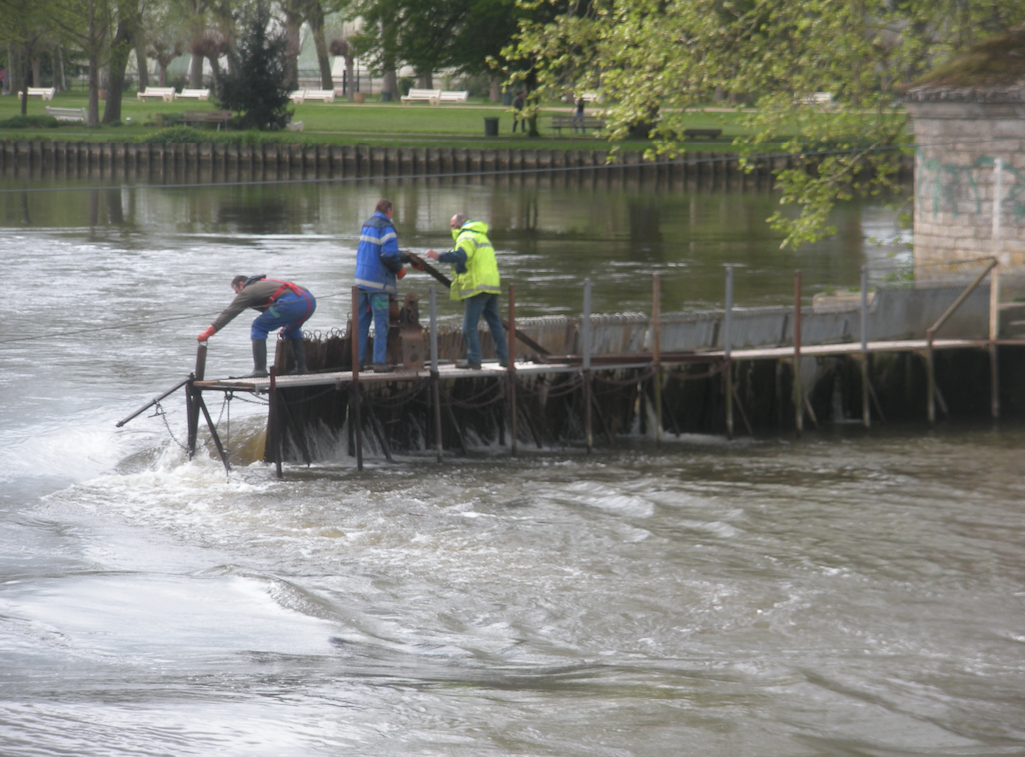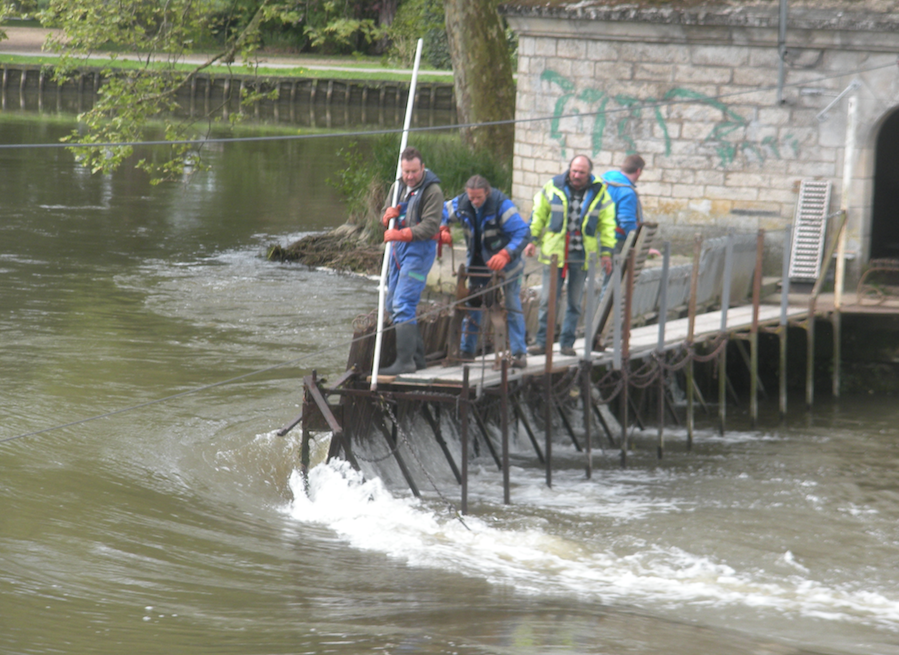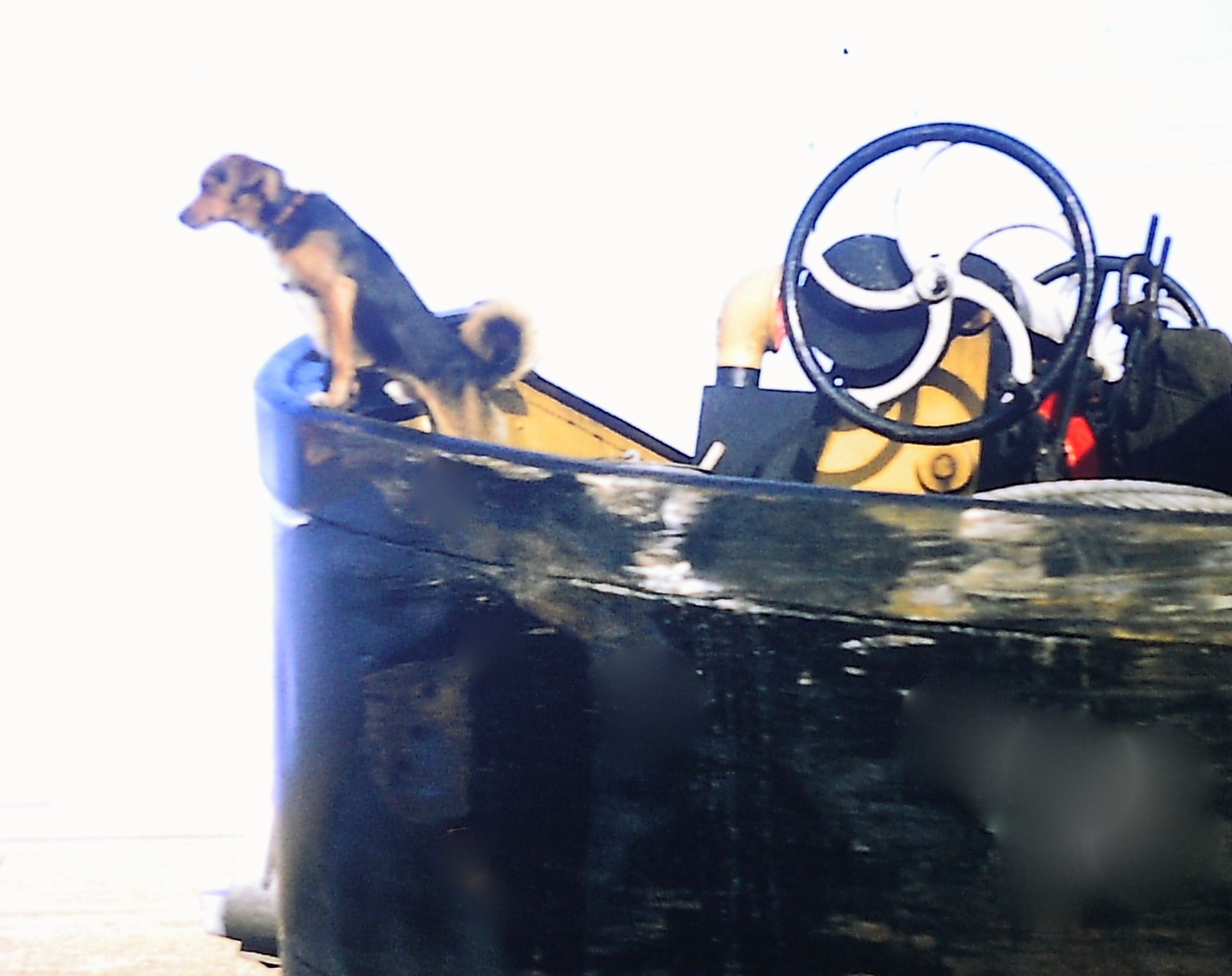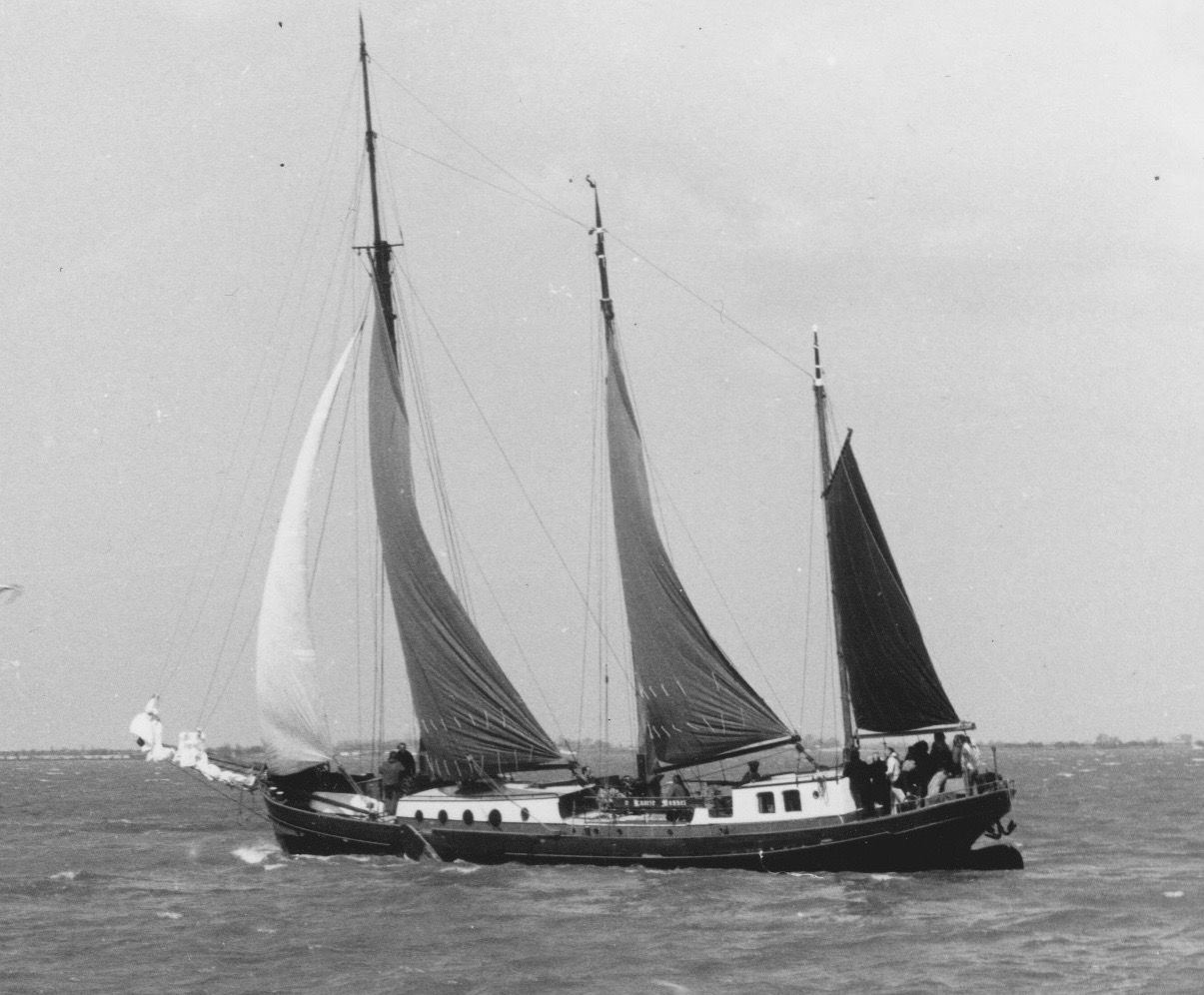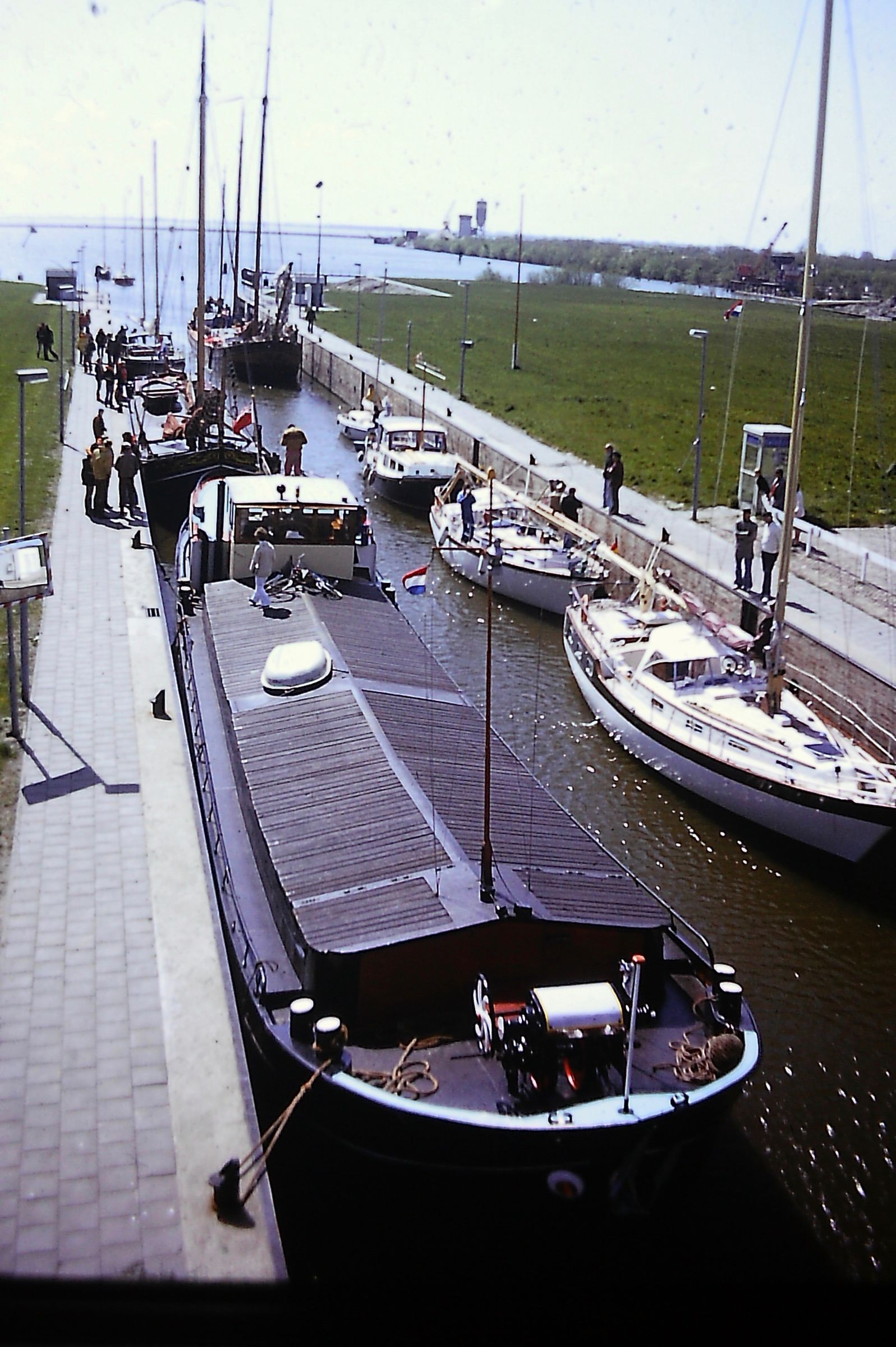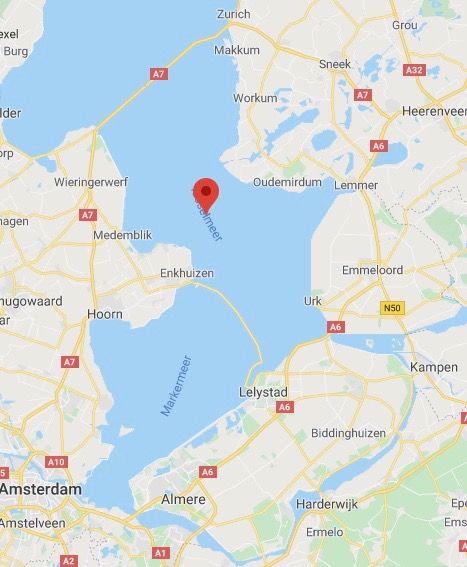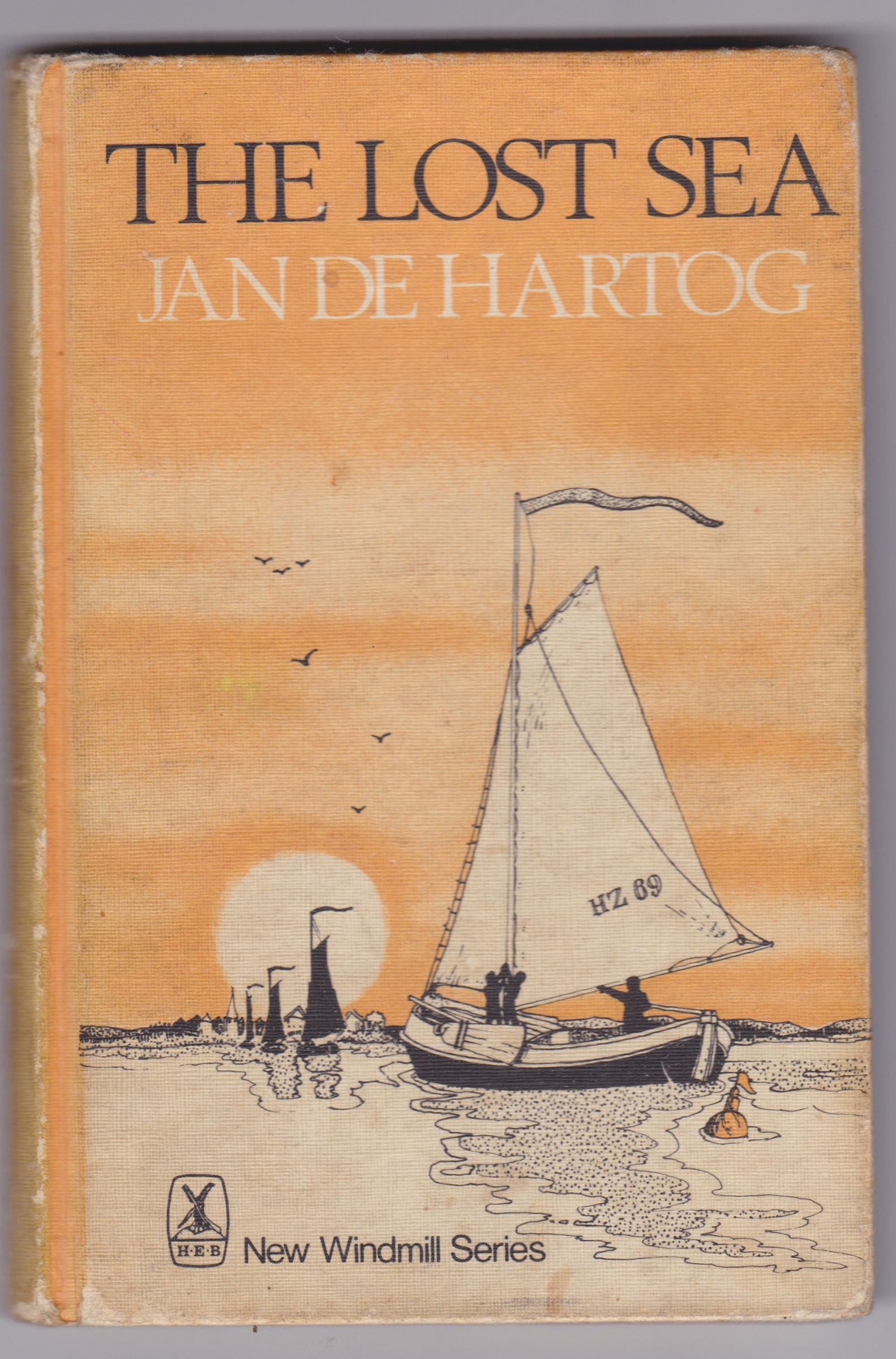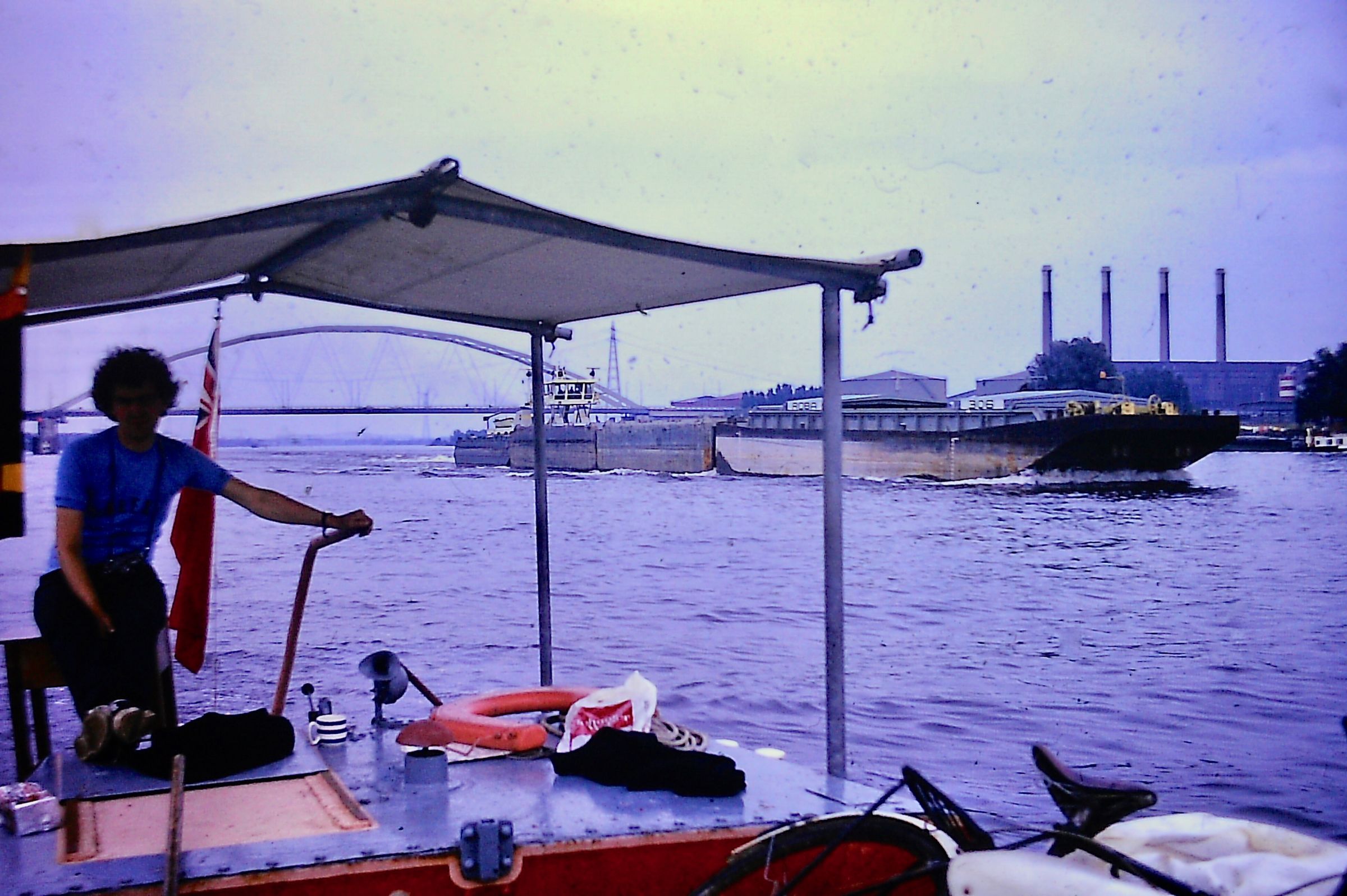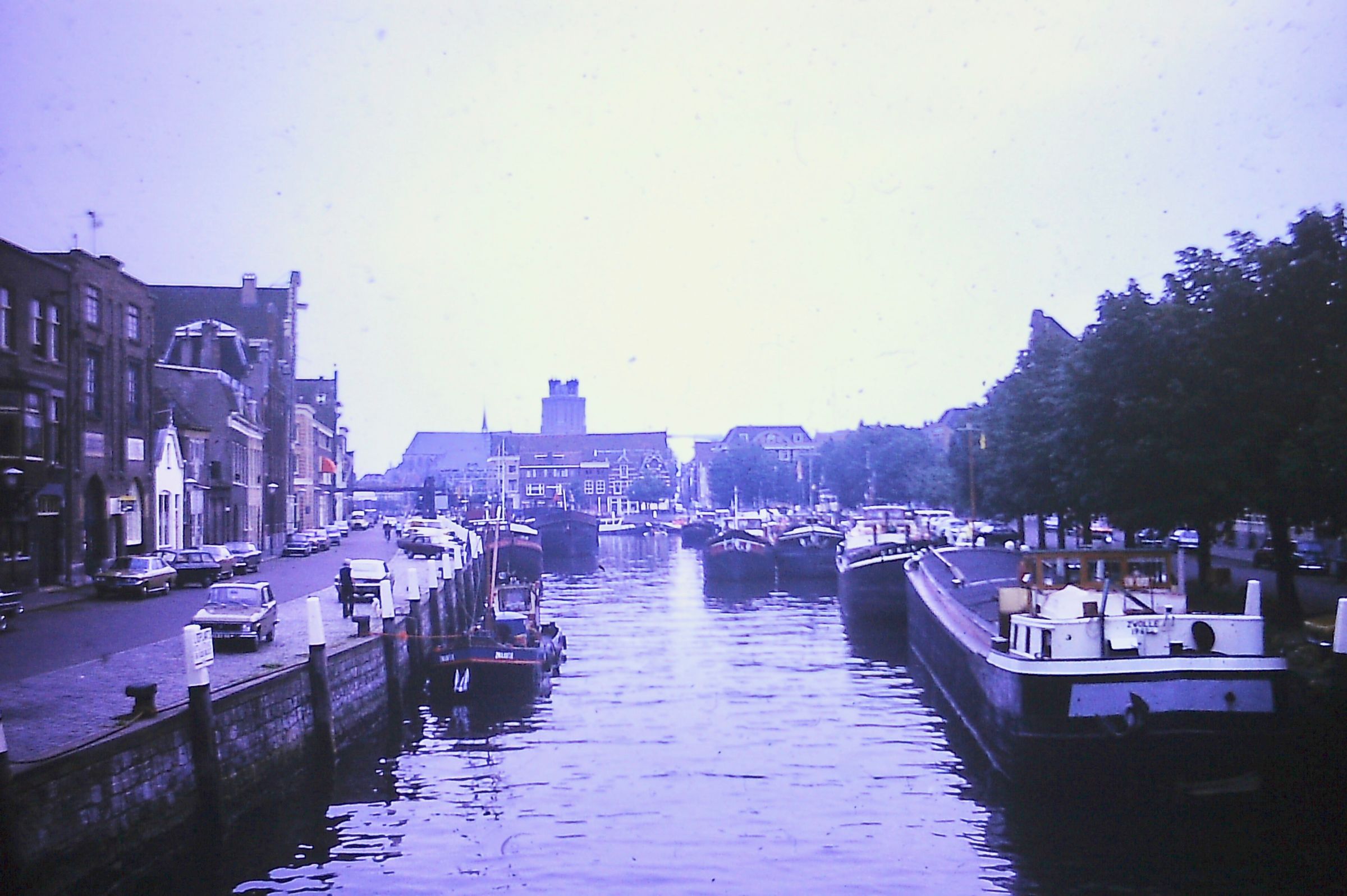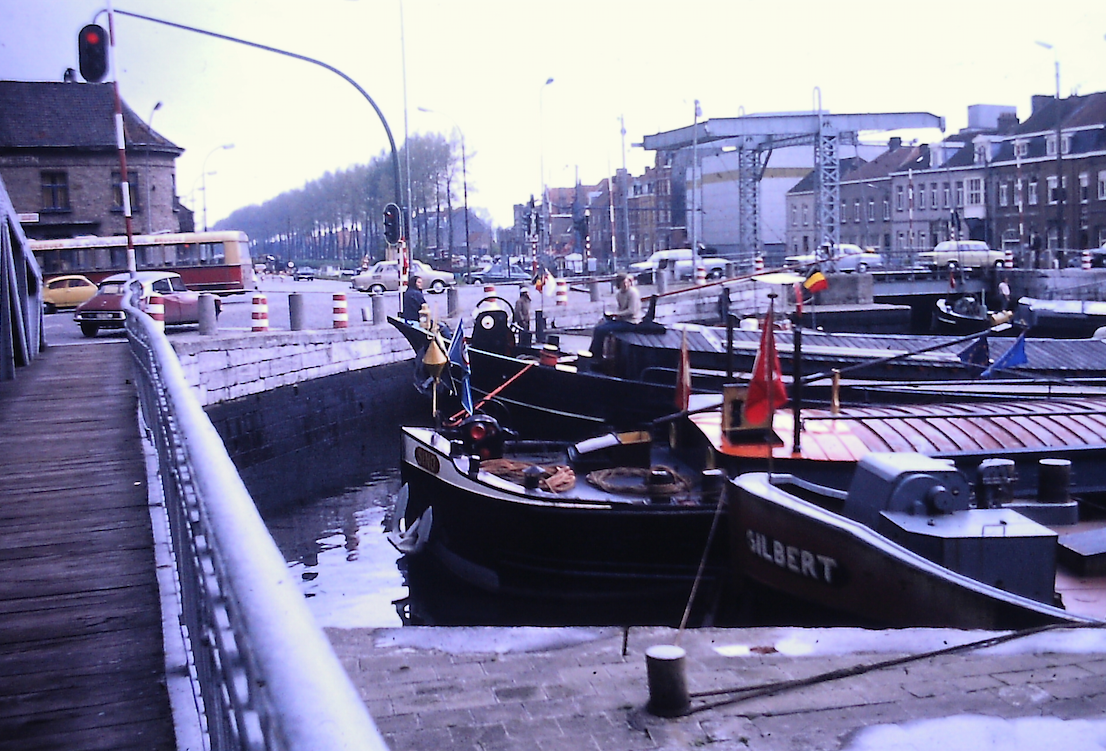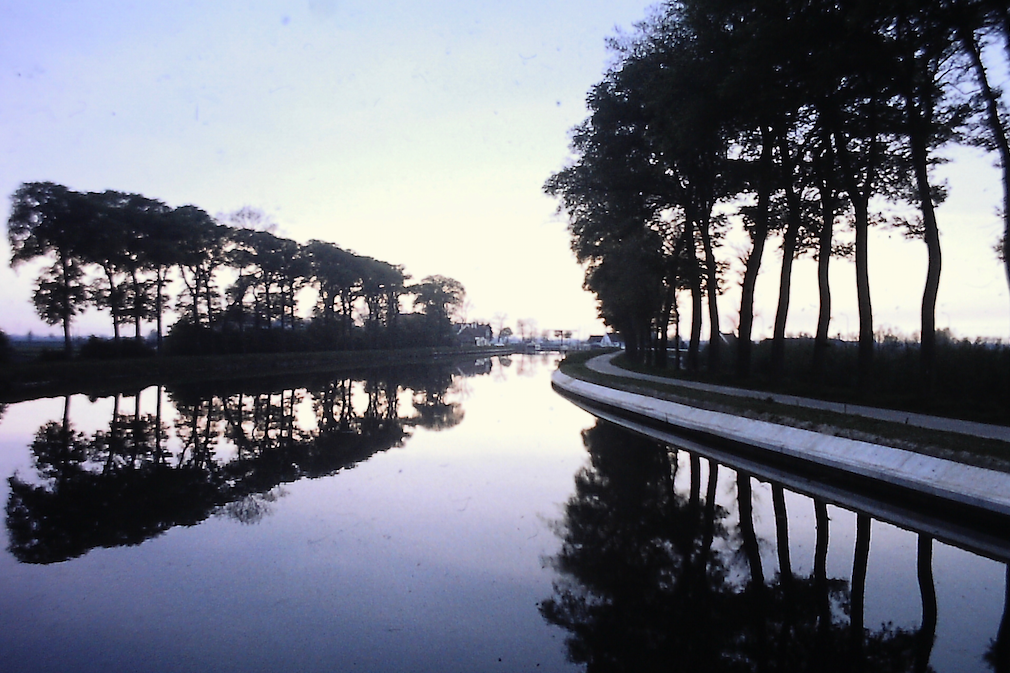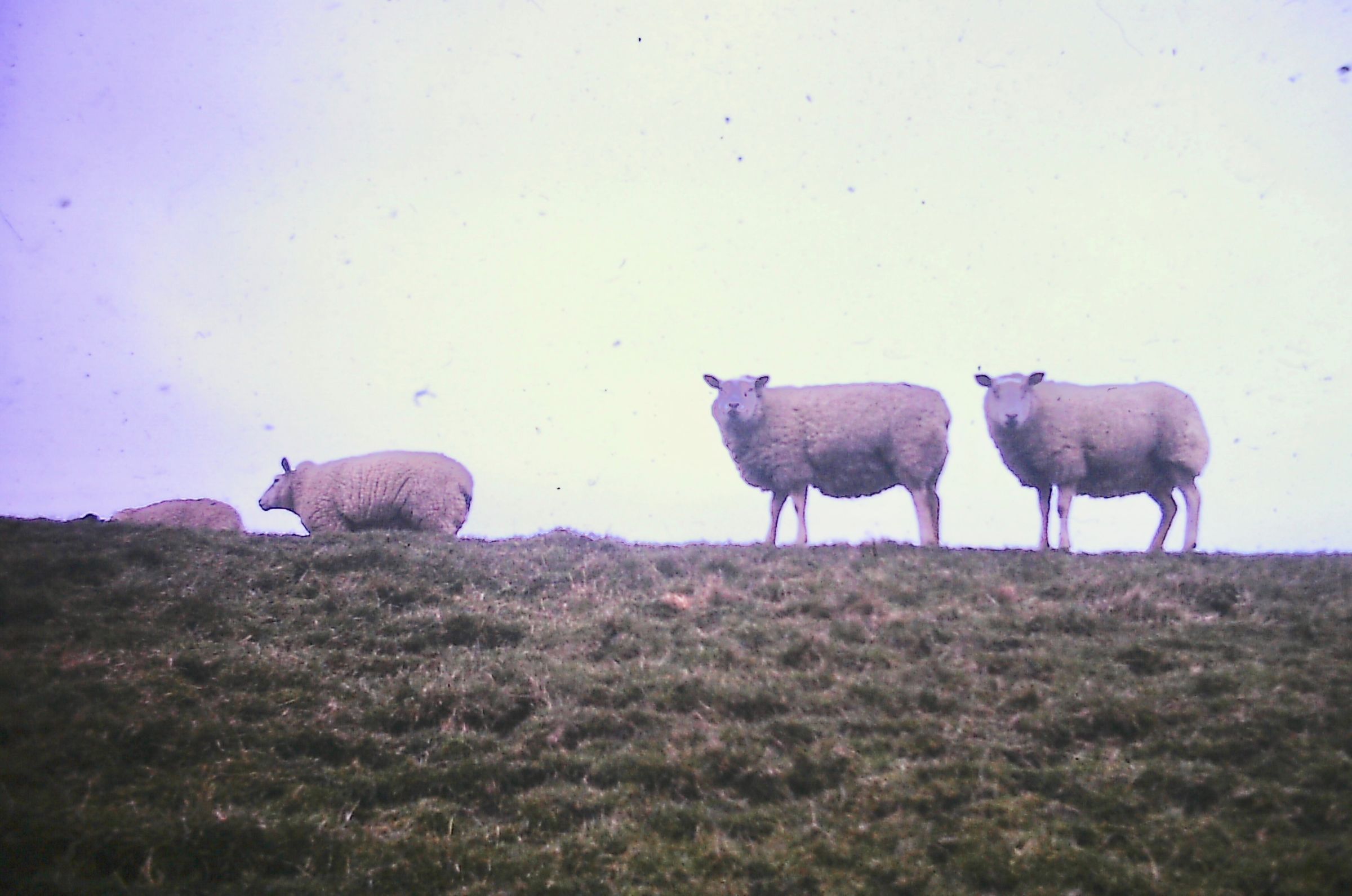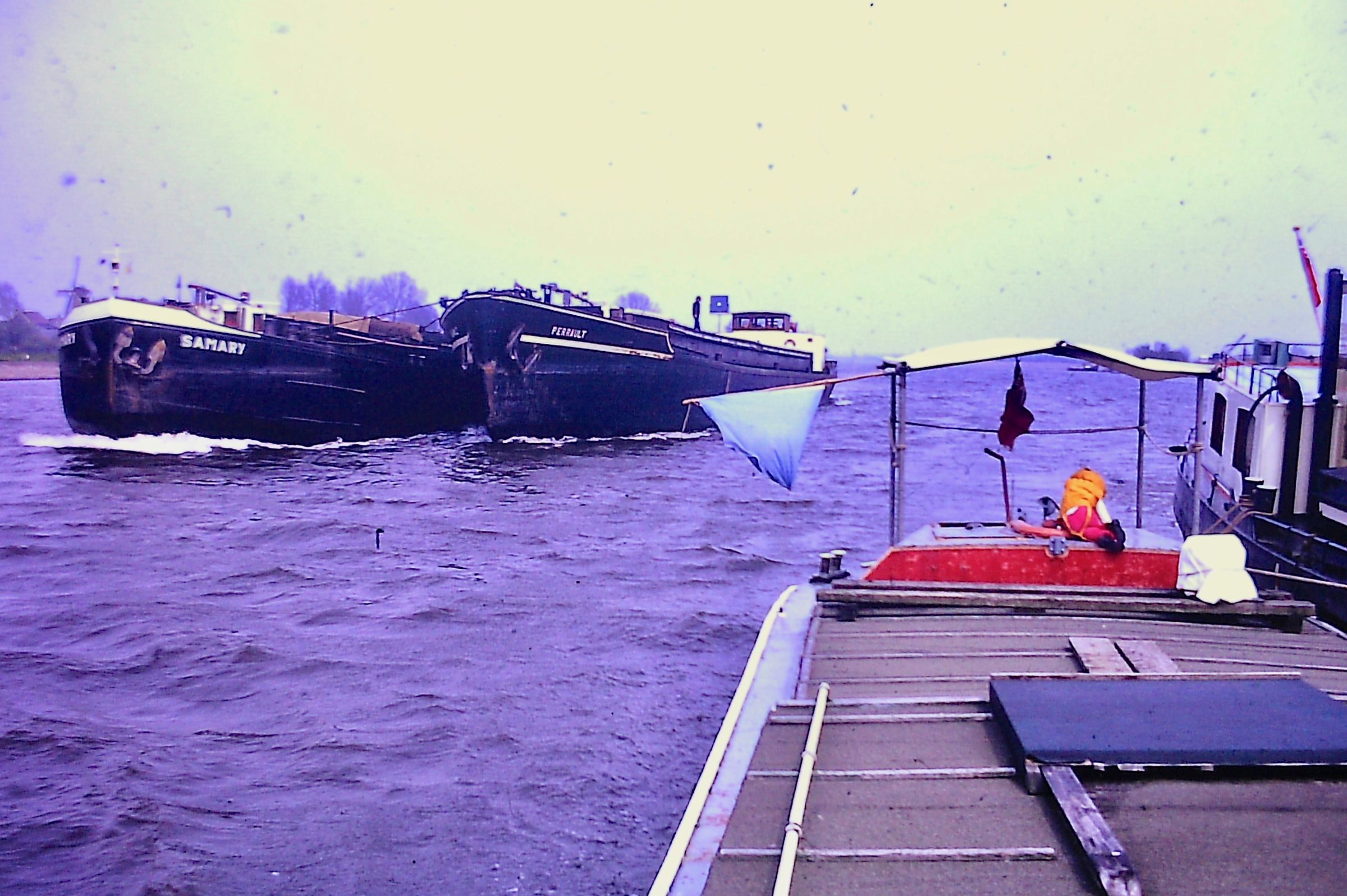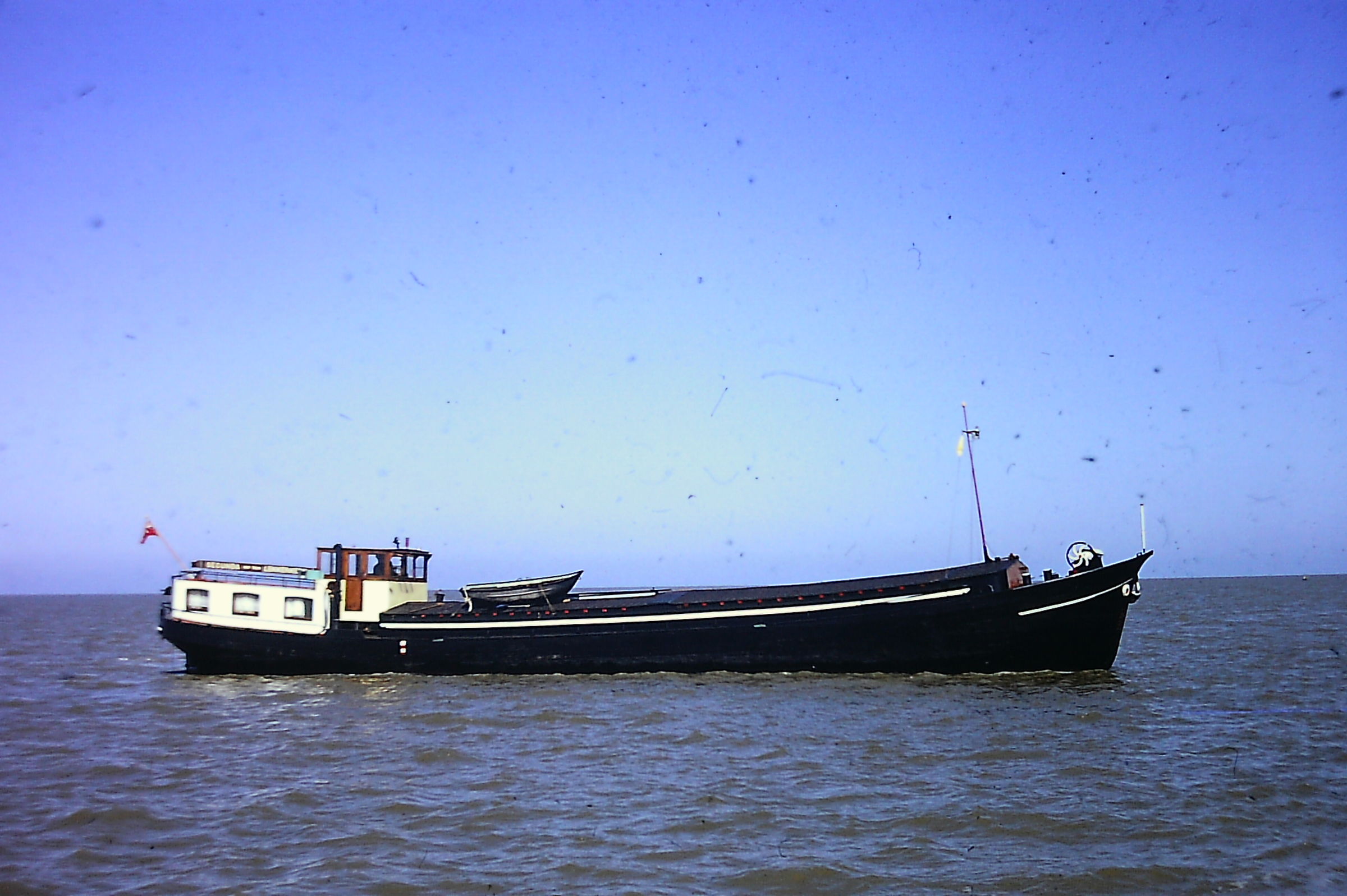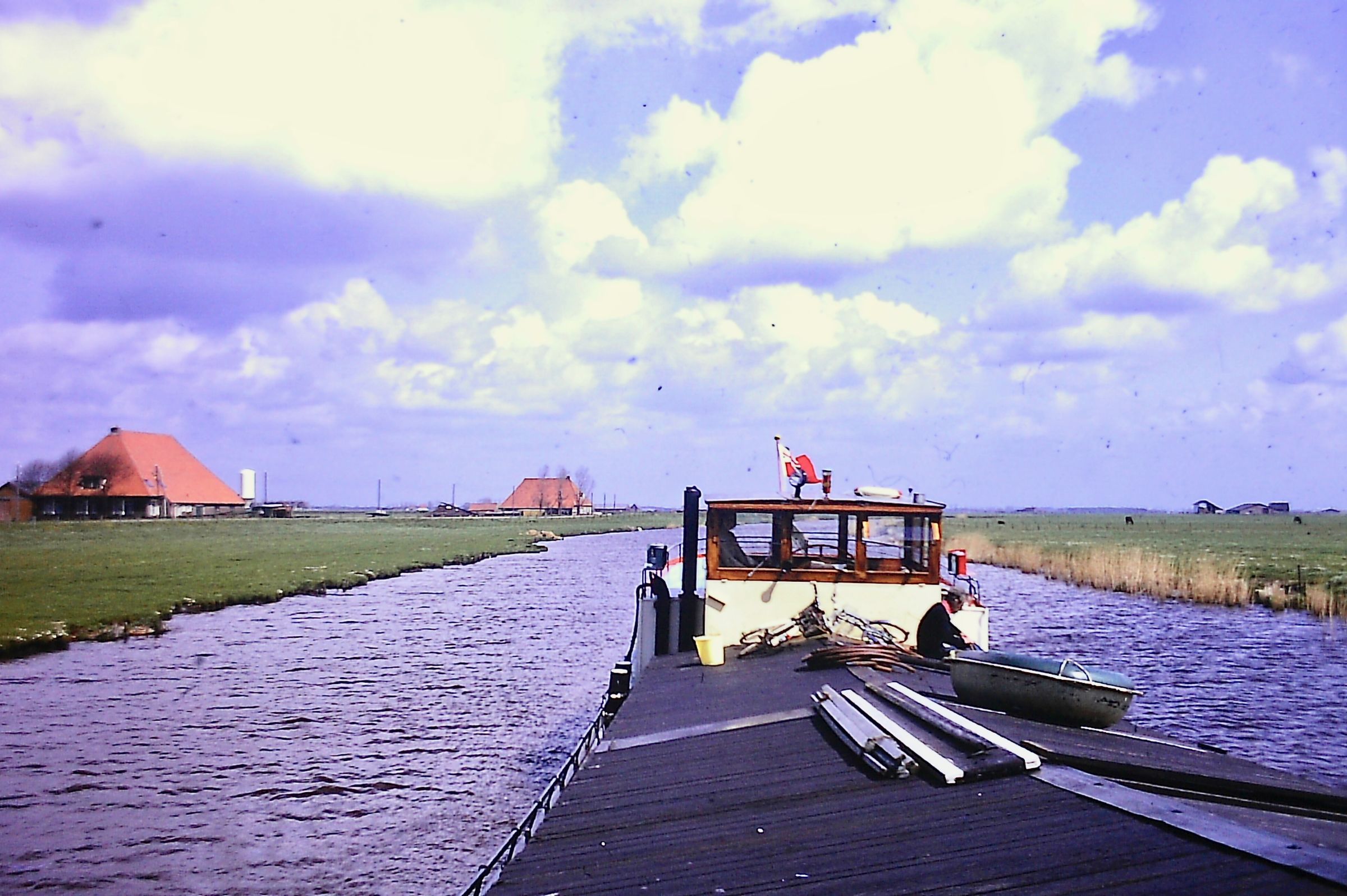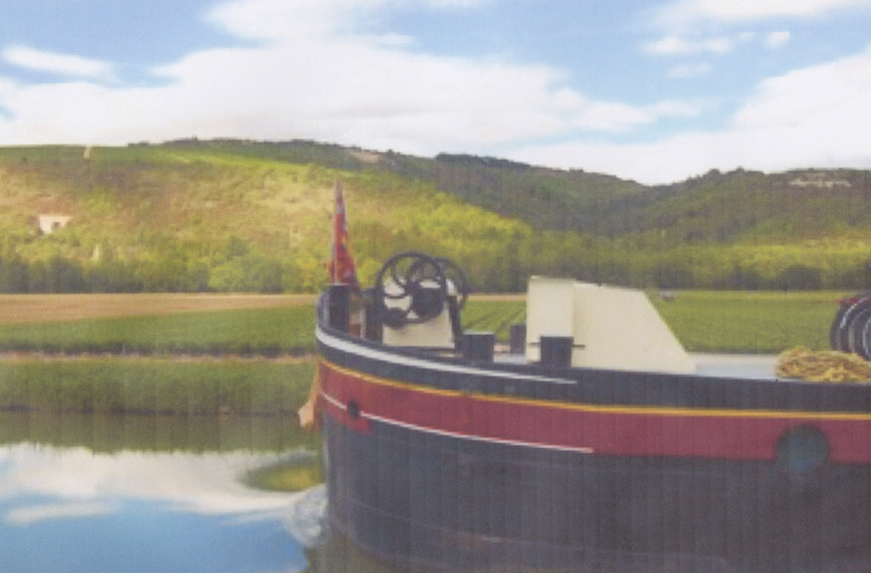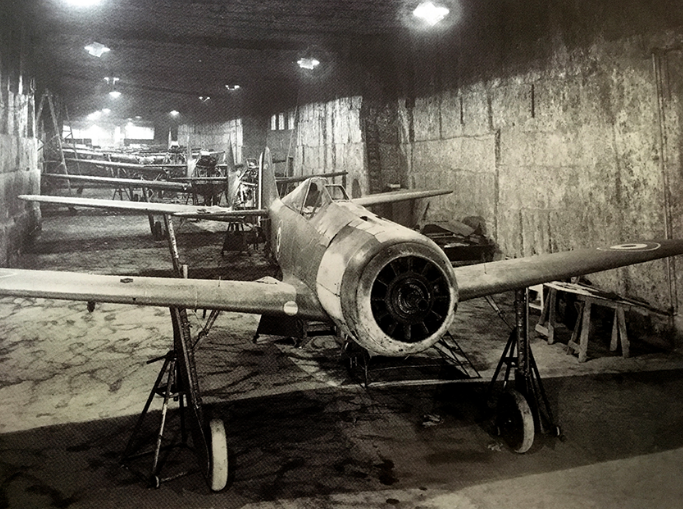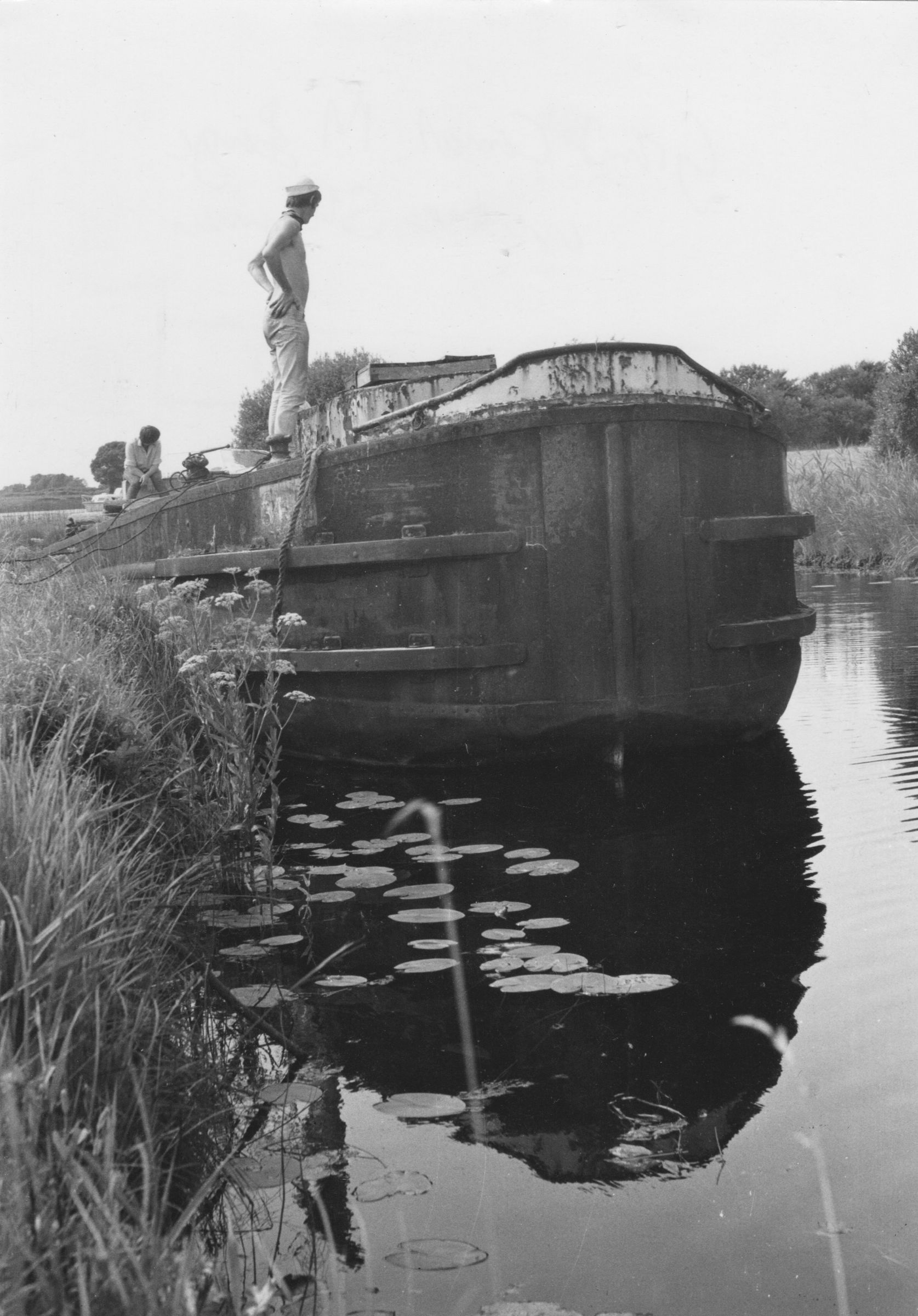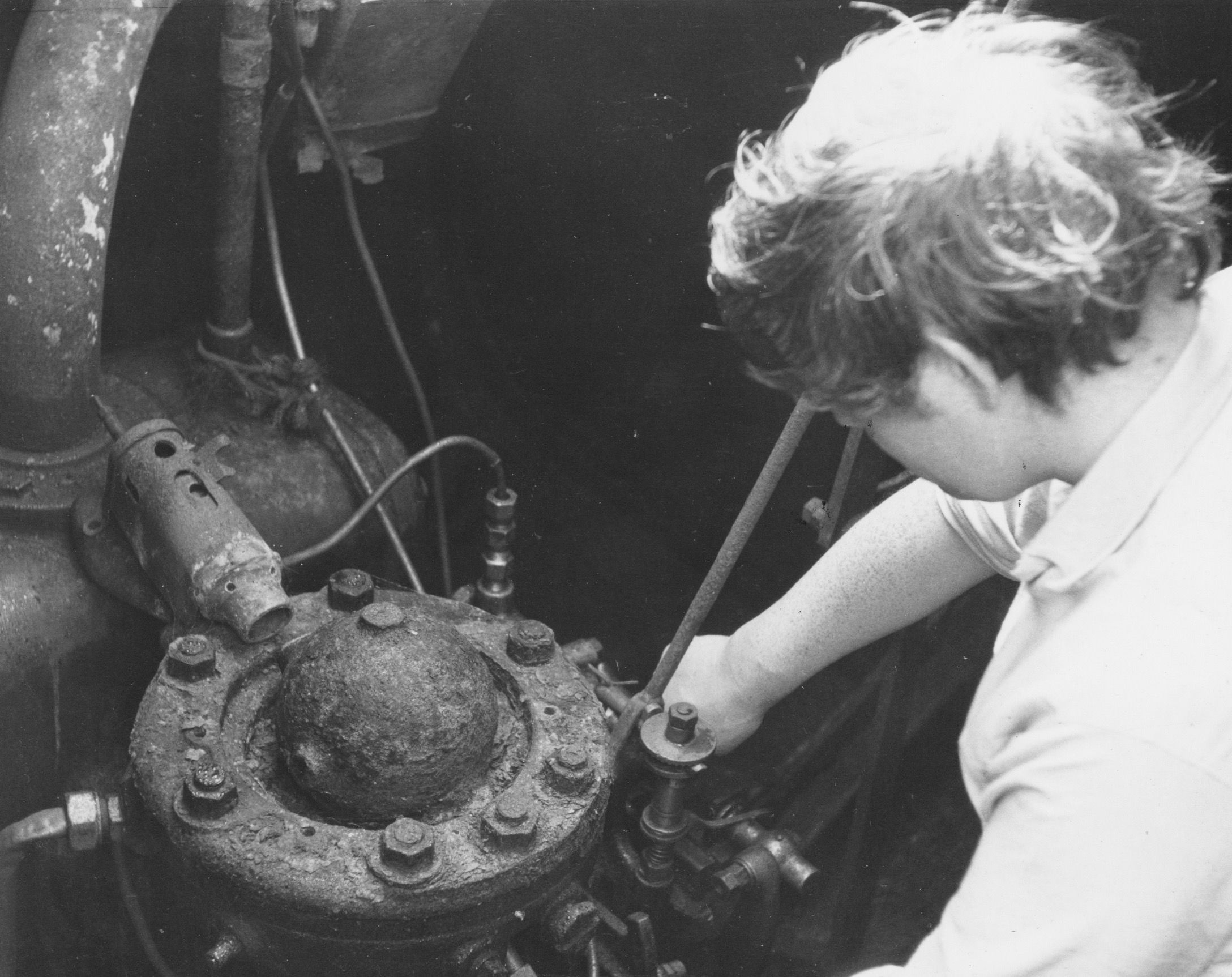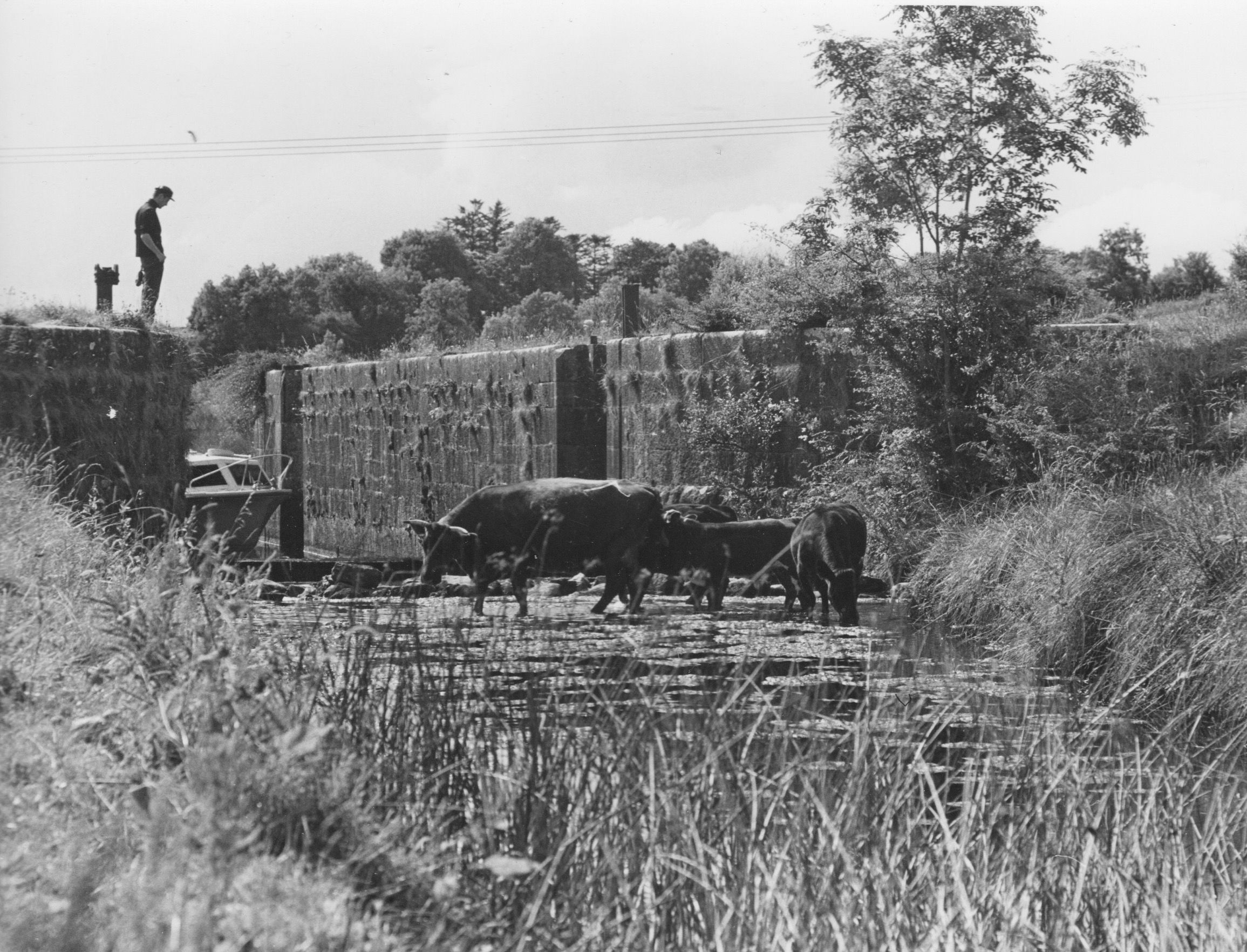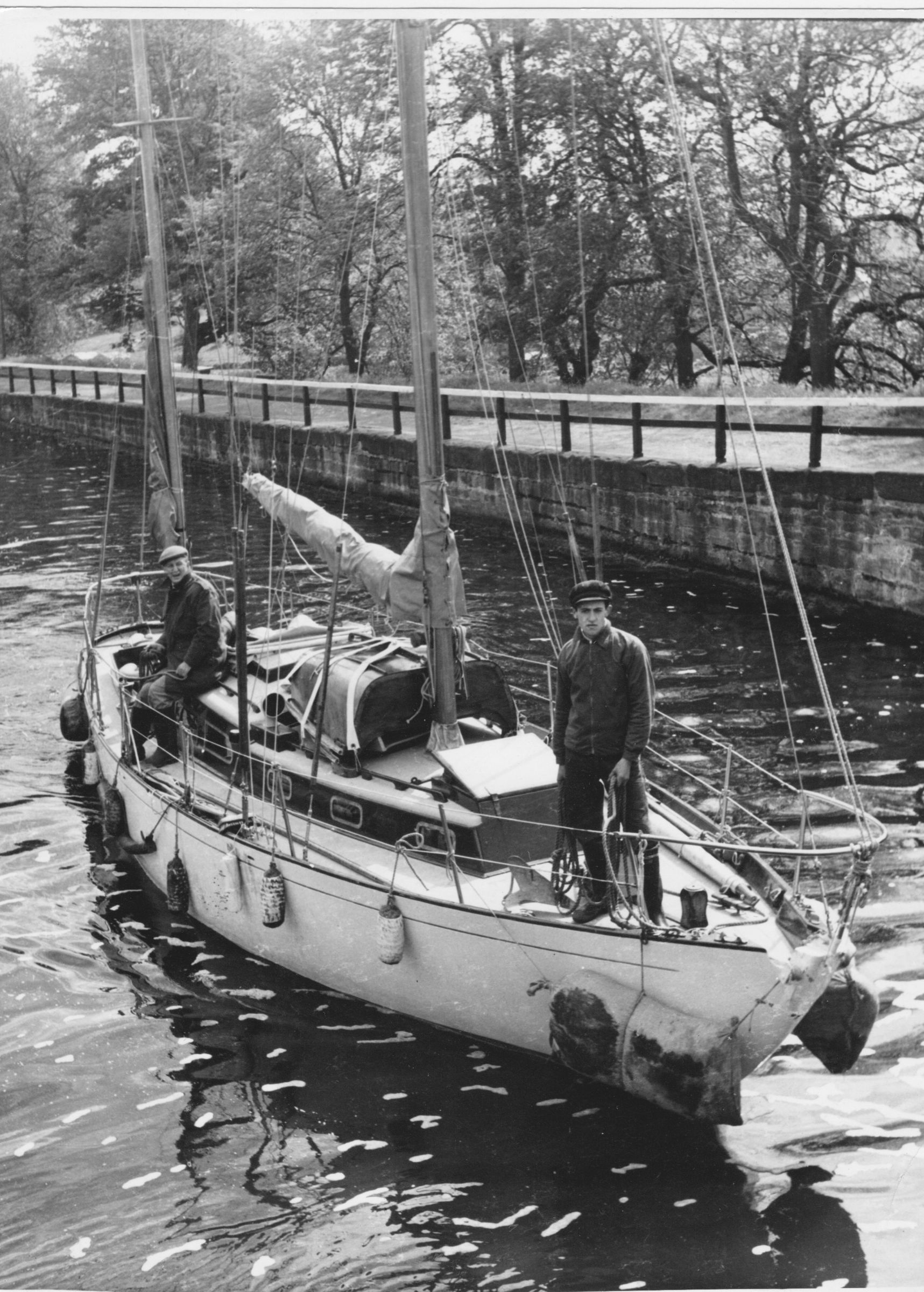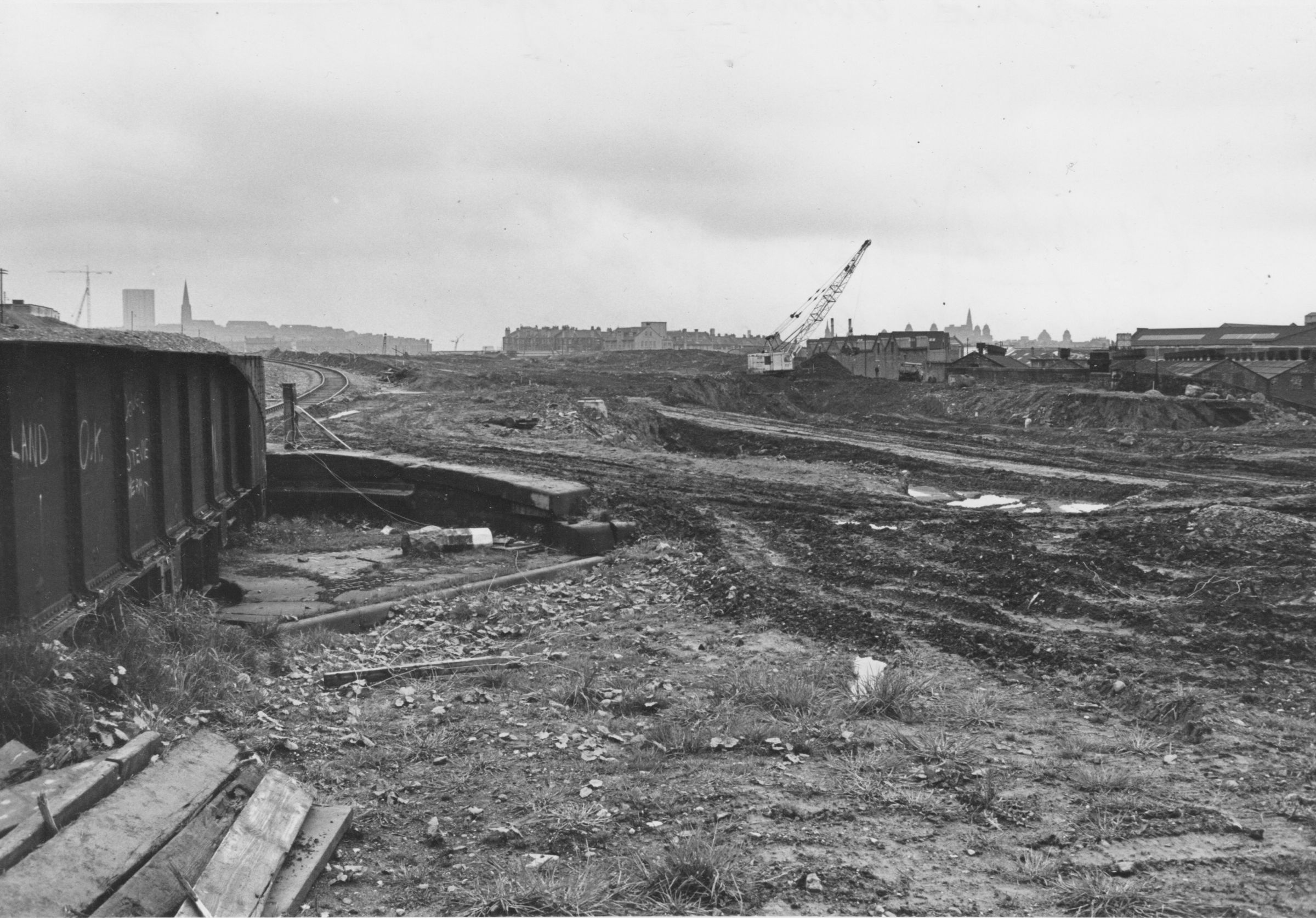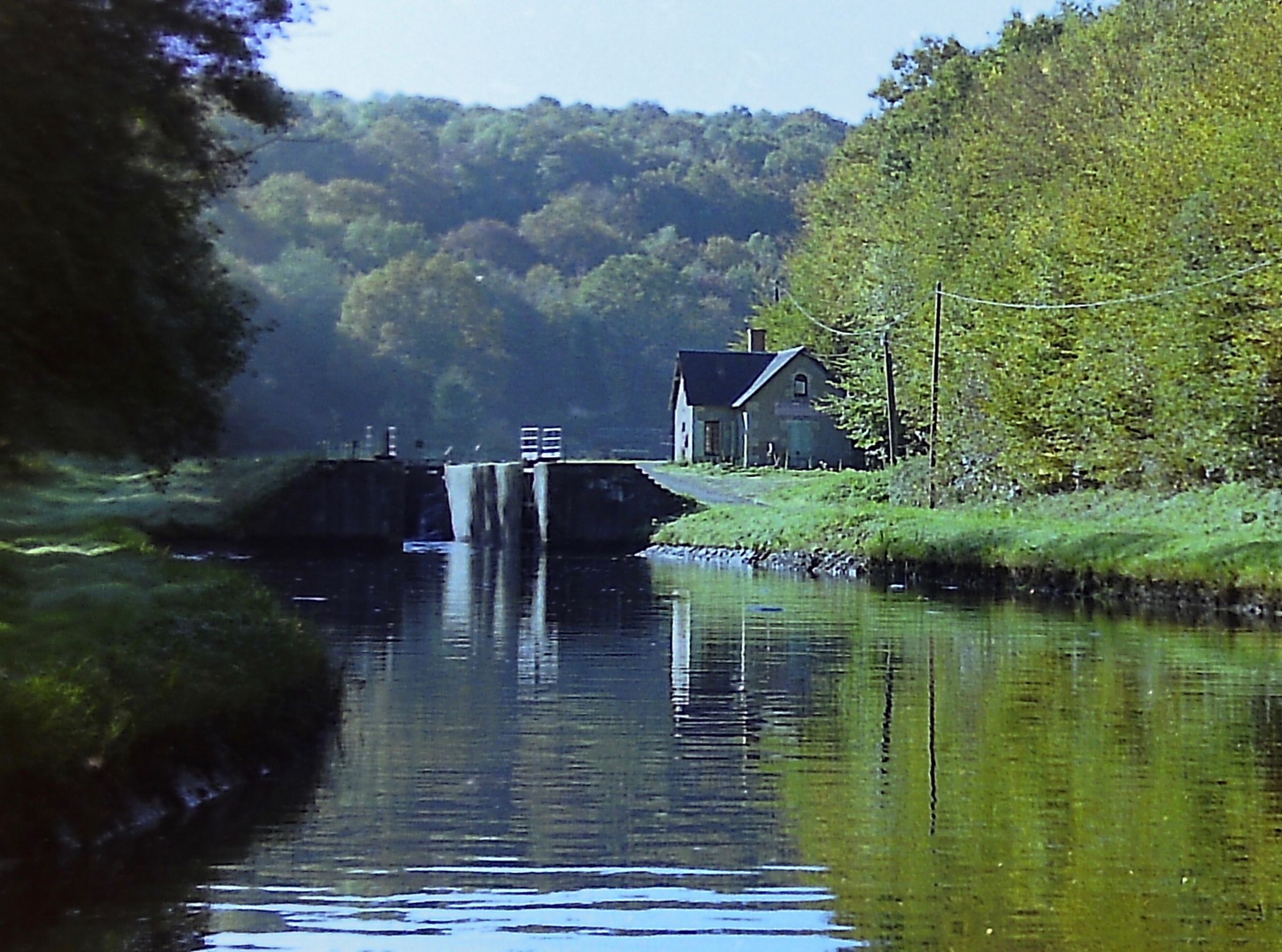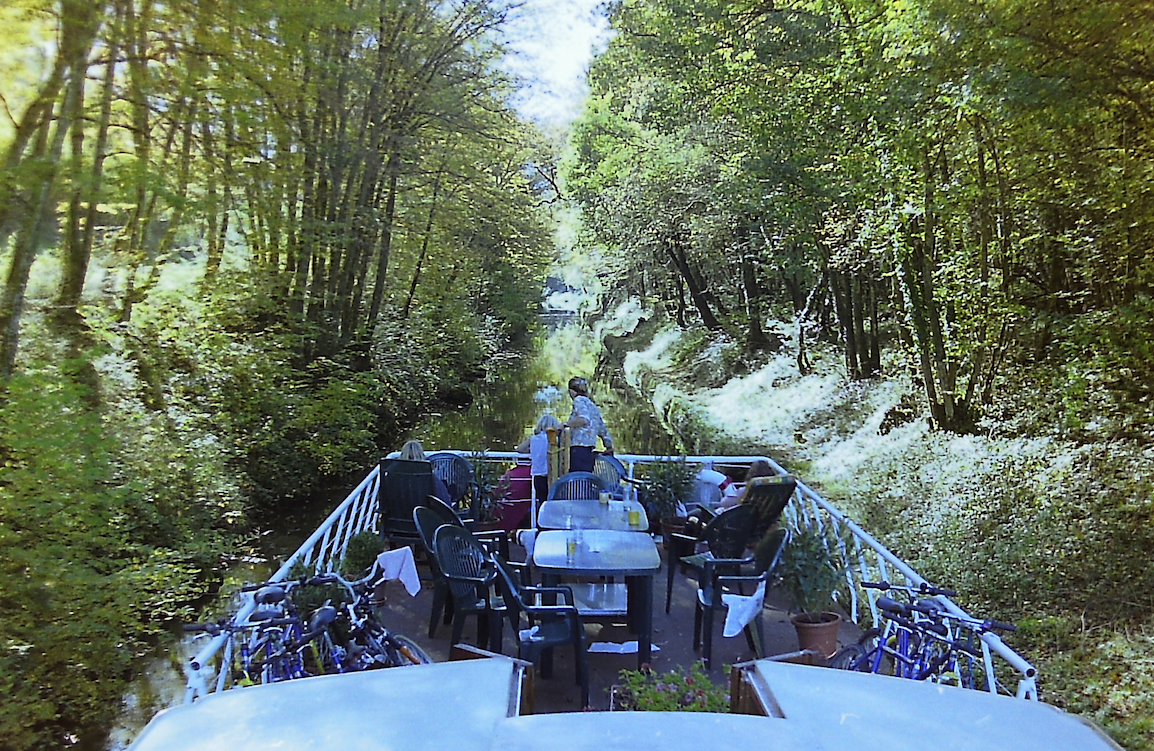

John Liley
Patron-
Posts
319 -
Joined
-
Last visited
Content Type
Profiles
Forums
Events
Gallery
Blogs
Store
Everything posted by John Liley
-
This is the Water Wanderer, introduced in 1960 as a hotel-barge by British Waterways of blessed memory. Cruising between Nottingham and Lincoln she carried 16 passengers. In 1973 I received a letter from Cyril Moores, who had bought the boat and hired a crew to get her across the North Sea. Six miles off the Norfolk coast however, the fuel pump seized and she was left wallowing. Whereupon the captain of a German freighter, who had been watching on radar, came back and towed them the 110 miles to Rotterdam at reduced speed without claim or reward. Eventually she reached the Canal du Midi, as pictured, operating successfully there, with eight passengers this time, for several years, before disappearing from view.
-
Kennet & Avon days. A friend rented a lengthsman's cottage near Dundas Aqueduct, where we would spend dreamy weekends, relishing the quietness of it all. The only boating was by the two local lads, seen aboard the otherwise untended maintenance punt. The Charlotte Dundas tripping boat ran over a stretch nearer Bath, accompanied sometimes by Fred Blampied's Kenavon Venure. Both were paddlewheelers, as they had to be, given the weed thereabouts. At the eastern end, British Waterways greeted incomers from the Thames with some serious advice.
-
When Michael Streat was establishing the first-ever hire boat base on the Canal du Midi, he sent out 4 Dolphin cruisers and two Carribean class boats to Bordeaix by ship> A group of his financial backers and friends, of whom I was one (friend not a backer( then took them to his original base at Toulouse. There was then freight aplenty, including some very old craft, as in picture one. On a later trip there were still many craft plying, hauling grain in one direction and wine in the other, for all of whome the graet wheeze was to get into the 57 kilometre long pound before the locks closed for the hight, and then continue. Picture four showsone such going past our mooring at Capestang somewhere around bedtime.
-
Reassembling the weir upstream of Auxerre. As the flood level drops and navigation is to be restored, various bit of ironmongery are retrieved from the river bed, folded into place, then the timber 'needles' that provide the barrier are brought out of storage and put into place. It looks, and is, a dodgy business. Gradually, over the years, these old needle barrages have been replaced by modern, electrically-operated barriers. Pulling out needles in the middle of the night when an unexpected flood arrived was one of several good reasons why lock-keeping staff, particularly lower down the Yonne where the forces are enormous, could sometimes be grumpy.
-
Our own Secunda was, in fact, built as a sailing vessel, in 1904, as a klipper. Several of these now run sailing holidays from Stavoren, where we were based, as in the photo. For us to fit out the boat as a hotel-barge on the French canals was a shame, rally, though she served us well enough, but the Lost Sea was her element. With a big, unbalanced rudder she would have been fine under sail. In a canal, though, it was another story, hence the difference in my shoulder muscles, twice the size on the right-hand side than on the left.
-
After purcgasing Secunda, we cruised around a while, first by a roundabout route to Amsterdam, then back more directly to Friesland. Here she is in the lock near Enkhuizen in the intermediate dam across what was once the Zuiderzee. A favourite book is Jan De Hartog's The Lost Sea. Supposedly for children, but recommendable at every level. The days of open water recaptured, and a masterpiece of storytelling.
-
With Secunda and Arthur en route to England, an entertaining couple of houre were spent in teis large circular lock outside Bruges. Two French barges needed to leave through the alternative exit in the background, and to achieve ths the rest of us had to shuffle around. It was mid-afternoon when operations began, but rush hour when they ended. This was a pity for the people in cars, since lifting the bridges also took an age, with several keepers on the case and occasional conferences on what to do next. Beyond, the route was lonesome, but eerily splendid. We stopped for the night where the second picture was taken
-
The Netherlands remembered. While waiting for the Secunda deal to go through I lived on L&L short boat Arthur, waking up one morning to find a row of sheep staring at me By the time I got my camera out, two of them decided they'd had enough, a pity as they'd formed an absolute line. On the journey back to England, Secunda towed Arthur sometimes, otherwise we travelled side by side. Coming up the Ijssel we were just about the slowest combo around. We got past this one pair but it was a close-run thing.
-
This is the Secunda when I bought her in 1975, and this was our first trip. an experimental one into the Ijsselmeer from Stavoren in Friesland. She was 30 metres by five, with a 6-cylinder Gardner engine and I got her, initially, for the present-day equivalent of £45,000. Bank of England permission was needed to transfer the money at the time and the BoE office, which strangely was in Scotland, took so long over the process, that with the shift in currencies at that time, the sum rose to a present-day £55,00, which was all that I had. I still havn't forgiven them. We had 35 tonnes of gravel put aboard, to help on the forthcoming crossing to Maldon in Essex, but had a good time roaming Friesland before taking the journey fown to Calais. The big roofs of Friesian farmhouses, cover accommodation for the owners and their livestock a well - a traditional thing in an area I had grown to love.
-
We always use this third arch,with our hotel-barge Luciole - in both directions. It can be tricky coming downstream when the current is strong, since the bridge is on the skew. You have to continue the line of approach that is shown in the photo. In the days of freight loaded barges used the first arch, the one beside the towpath, making fast to bollards on the shore, then easing through gradually. I tried this once with our previous barge Secunda and was surprised how complicated it became. Each time we stopped the current pushed the stern in or out depending on the slant of the rudder. I saw then why it took the loaded freighters so long to get through, taking maybe fifteen minutes to do so . Because of the overhead clearance the wheelhouse came under threat and many a conference took place as ropes were released or tightened. The middle arch is better!
-
Thanks very much for coming up with this. Having been taught with great certainty at my esteemed grammar school that the Duke of Bridgewater and James Brindley jointly invented canals I have been struggling ever since. Probably the Chinese will have something to say on who came earlier, but to build the Canal de Briare at the beginning of the 17th Century the size that they did was an achievement all the same. One wonders at what stage the Duke, having visited both the Briare and the even larger locks on the Canal du Midi, realised he could get away with the sizes that he did.
-
Since work on the Canal de Briare began 130-odd years before the Duke of Bridgewater was even born, and since it is said to be the first summit levelc anal in Europe with chamber locks, I have often wondered what size those were. The lengthening of this staircase presumably follows the Becquey Plan of the 1820s when the entire waterway system of France was reviewed, and a lock length of 30.40 metres was established, with a width of 5.20 metres. But were the original locks of this width? It sounds mighty ambitious.
-
A woolly photo shows our hotel-barge Luciole heading northwards down the Canal du Nivernais in the vicinity of Cravant. In the background, LH side, may be glimpsed one of the caverns in the hillside, limestone quarries cut centuries ago. In one, today, fine sparkling wine is produced. In the cave that is pictured, a French aviation company set up in business, only to find the premises taken over by the German forces of occupation. Here, safe from Allied bombing, Focke-Wolfe 190 fighter aircraft were repaired by a workforce of prisoners, local employees and, at one stage, 200 Russian women - there was an extensive White Russian contingent in the German army units hereabouts. Damaged aircraft arrived by rail and, three times a month by barge, unloading at a quayside nearby. Restored planes took off from the grass airstrip that still survives beside the canal on the western side. This was a large-scale business - when the Germans left 20 fuselages and 150 wing sets remained.
-
There was an awful lot of rust around that engine so we did not feel inclined to try It was a CIE maintenace barge, apparently just left to decay, though I would guess that, in the canal enthusiasm that was starting to build, someone will have taken the boat over and restored her Regrettably I did not take her number, though another photo reveals that she was M thirty-something.
-
Long ago on a trip up the Shannon, friends and I got as far as the entry lock to the Ballinamore & Ballyconnell Canal, opened in 1860 and closed again nine years later, having passed just eight boats in that time. On a later voyage, on Lough Erne, we looked at the other end, where the locks lay buried amongst the brambles. There seemed no hope in recovery, but, in the spirit of cross-border co-operation the Republic and Northern Ireland together rebuilt the whole thing. The Shannon - Erne link reopened in 1994. Will there, now we have left the EU, be a customs post part way along?
-
The Forth & Clyde Canal in 1962, and what became of it the following year. Yachts such as this could pass through without having the masts lowered, while fishing vessels also made extensive use. All bridges could be lifted or, more commonly, swung under electric power (unless the fuses blew -which in the last days they increasingly did did.

